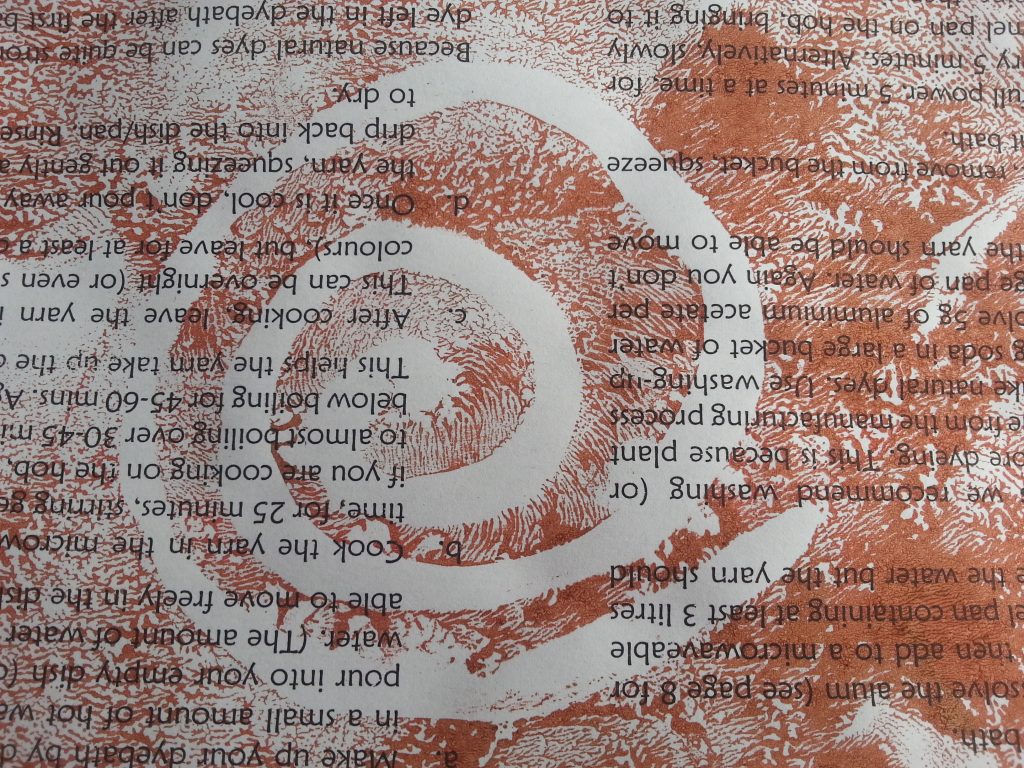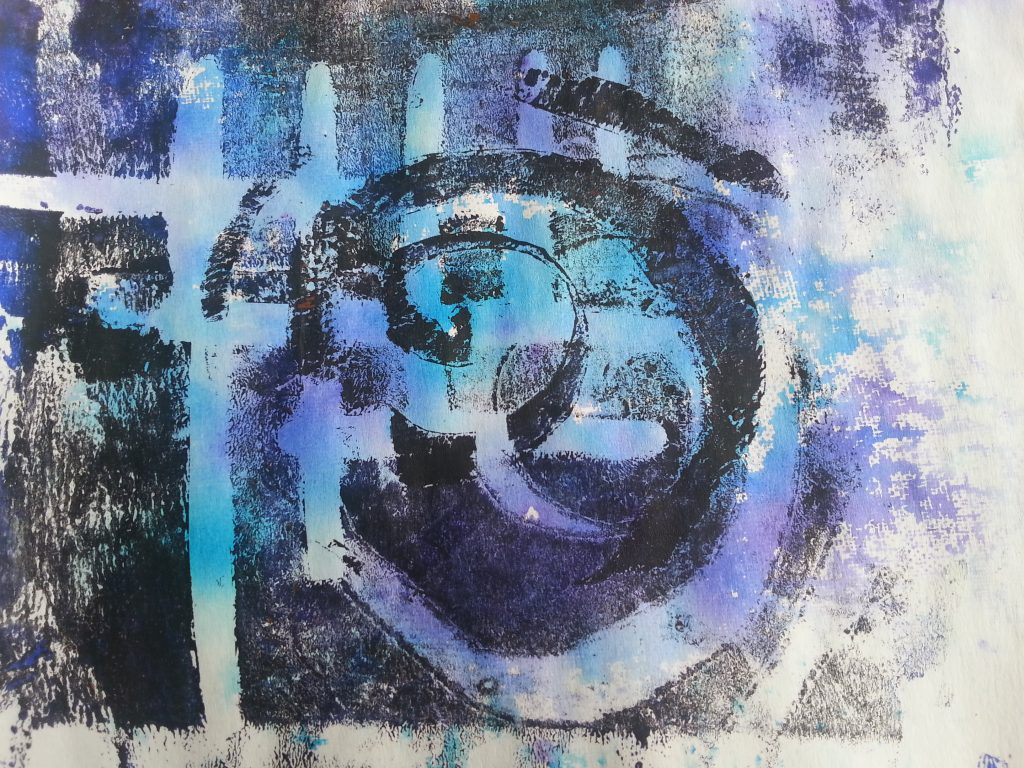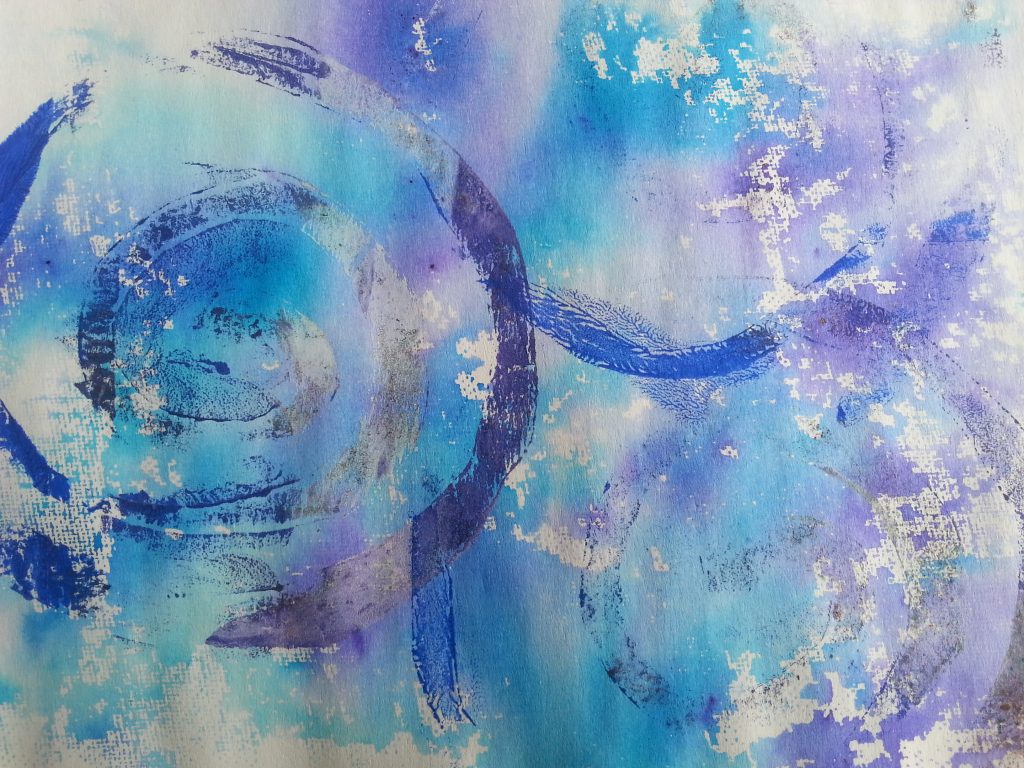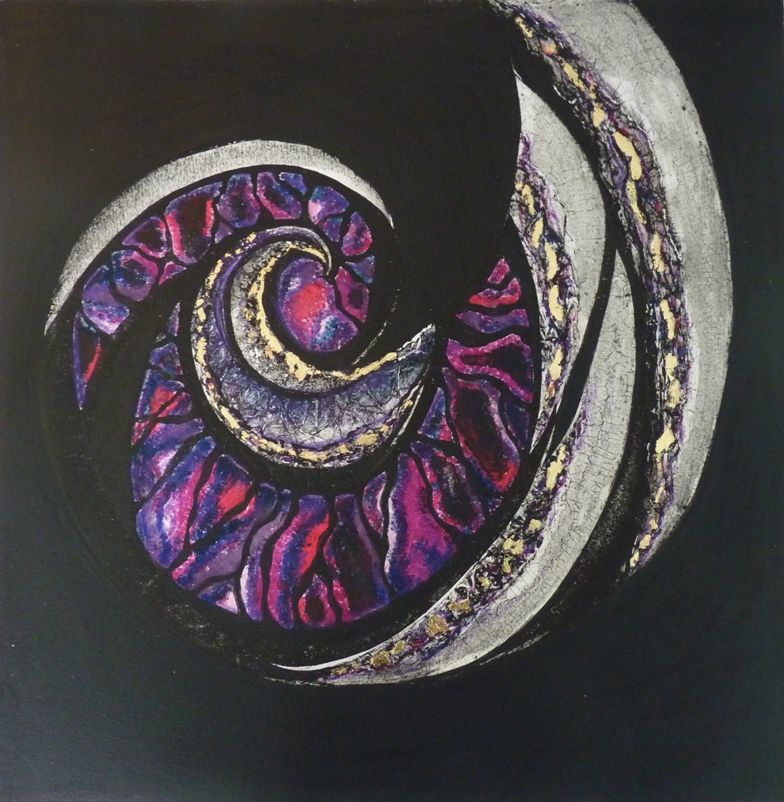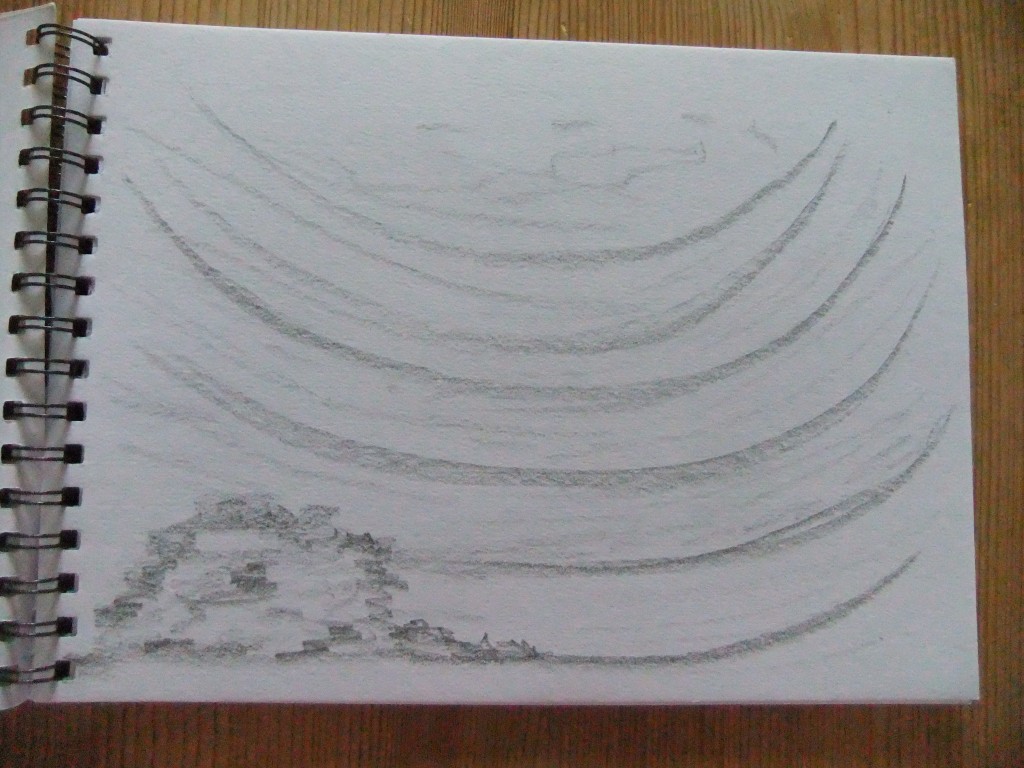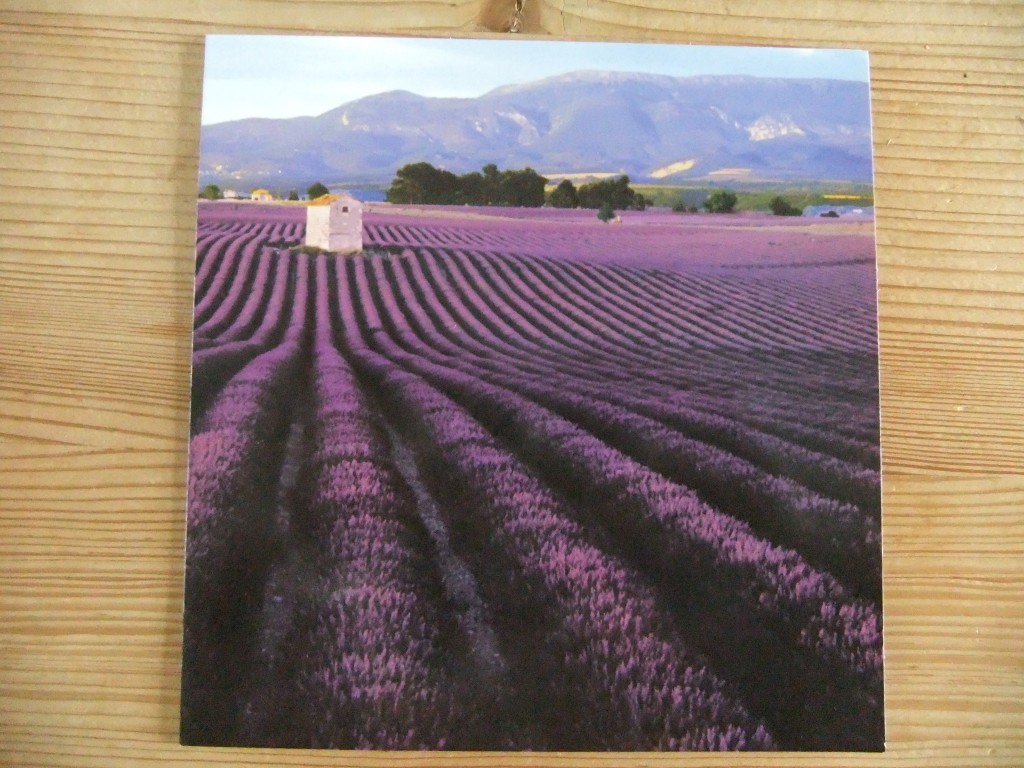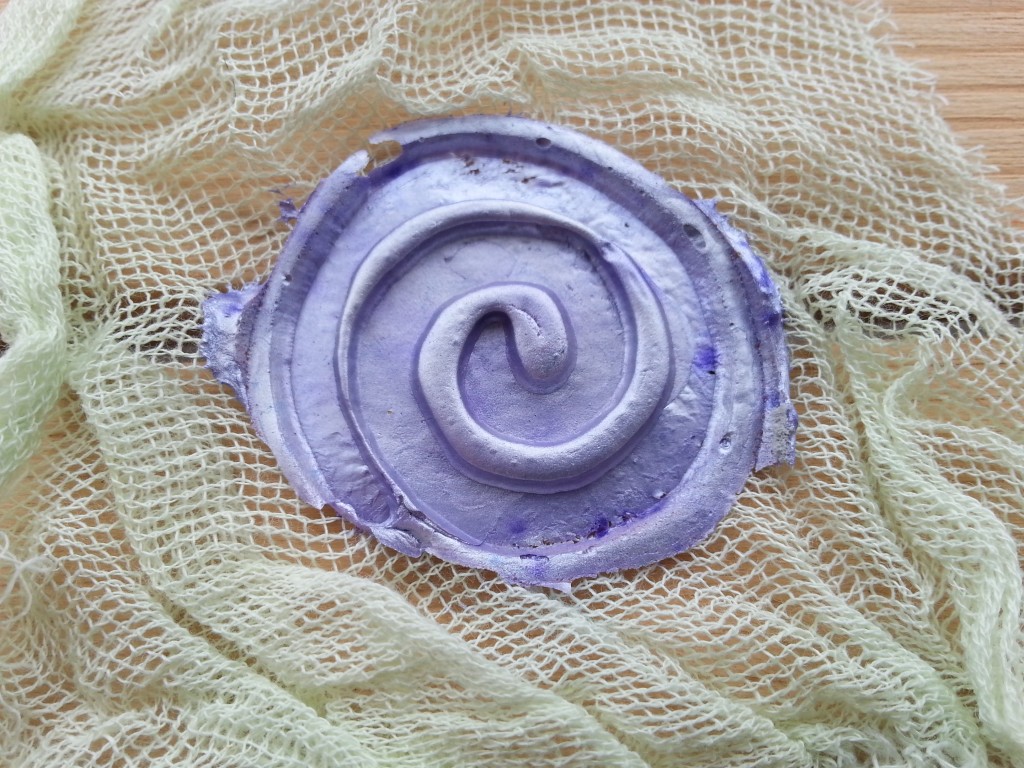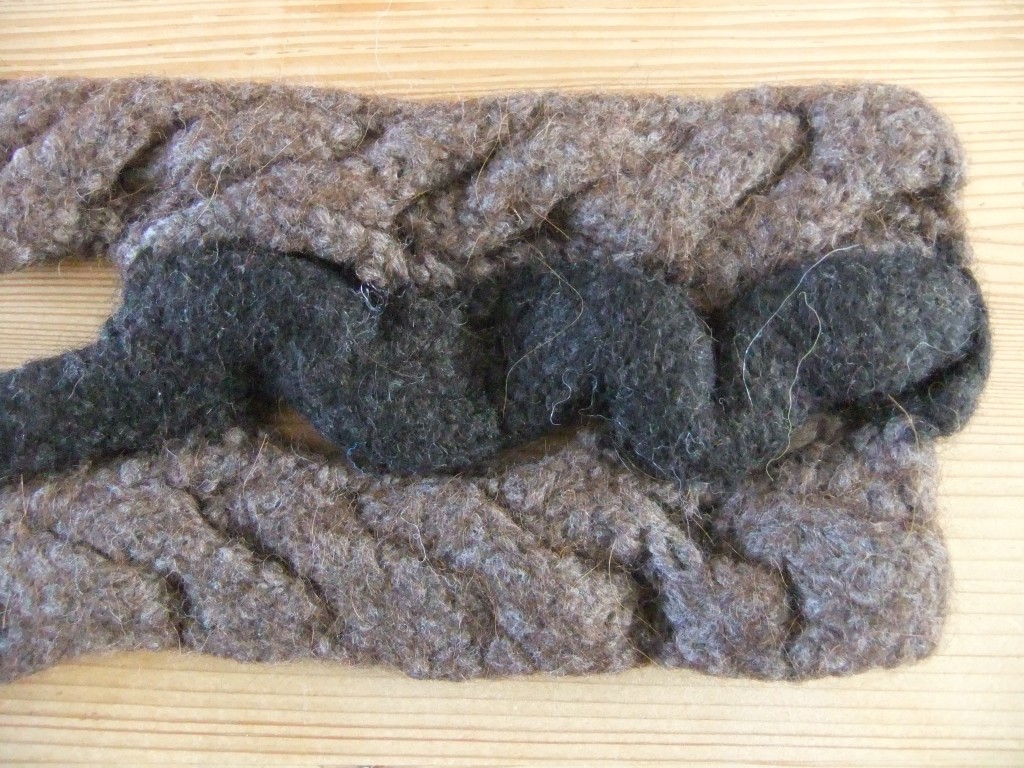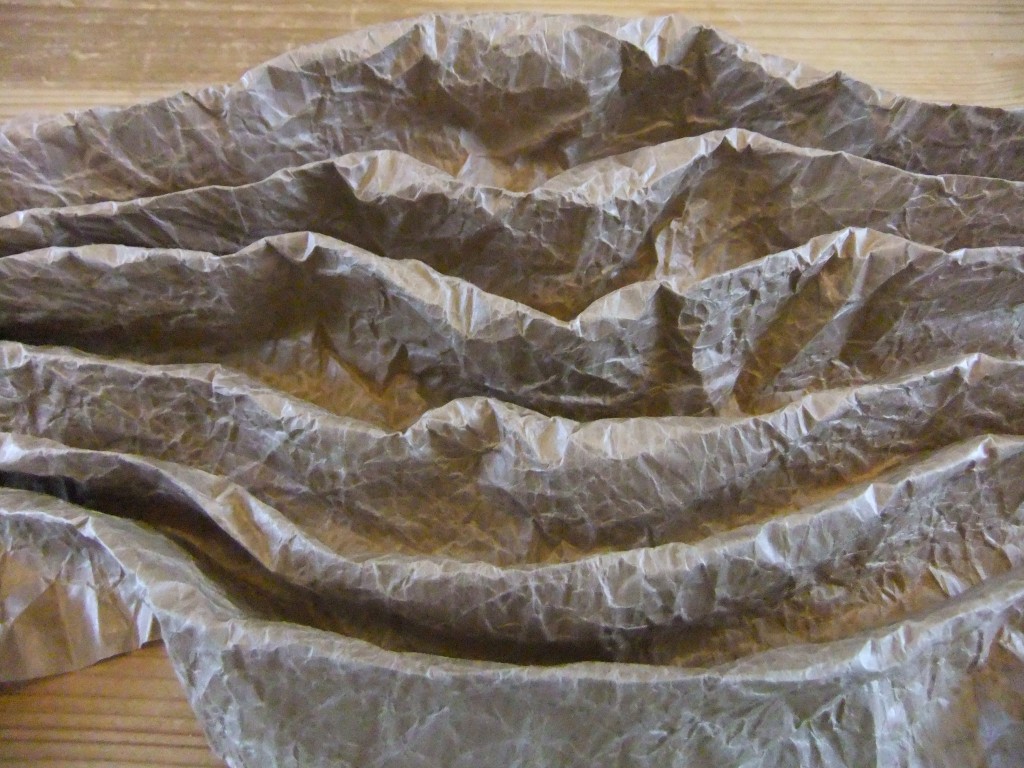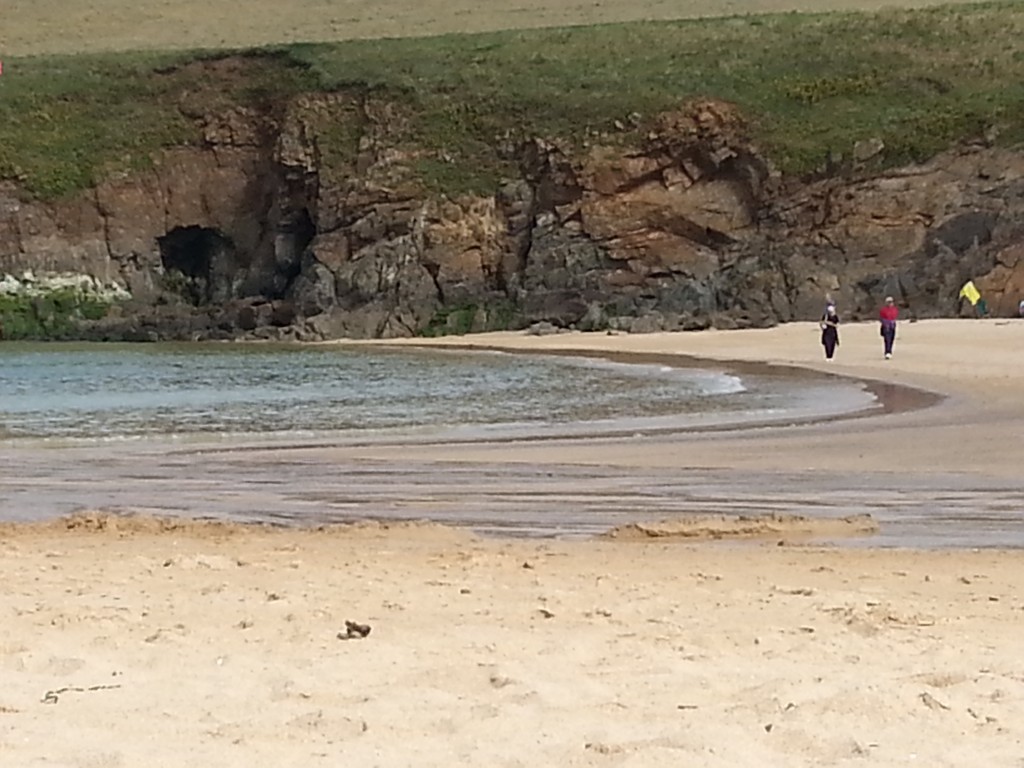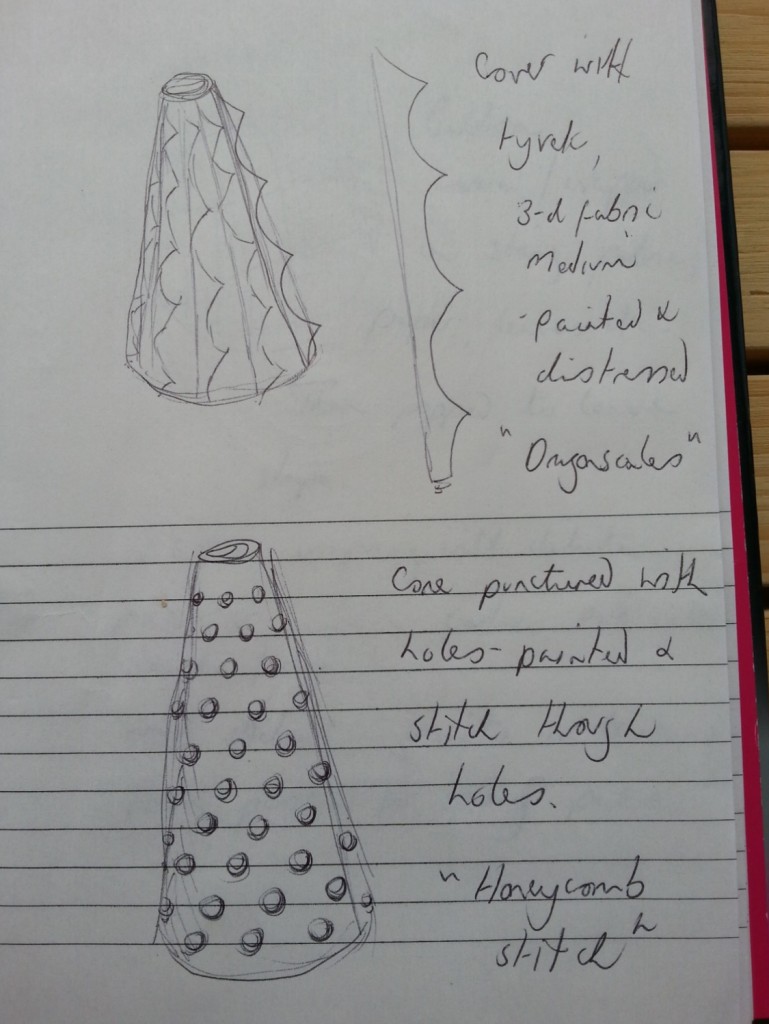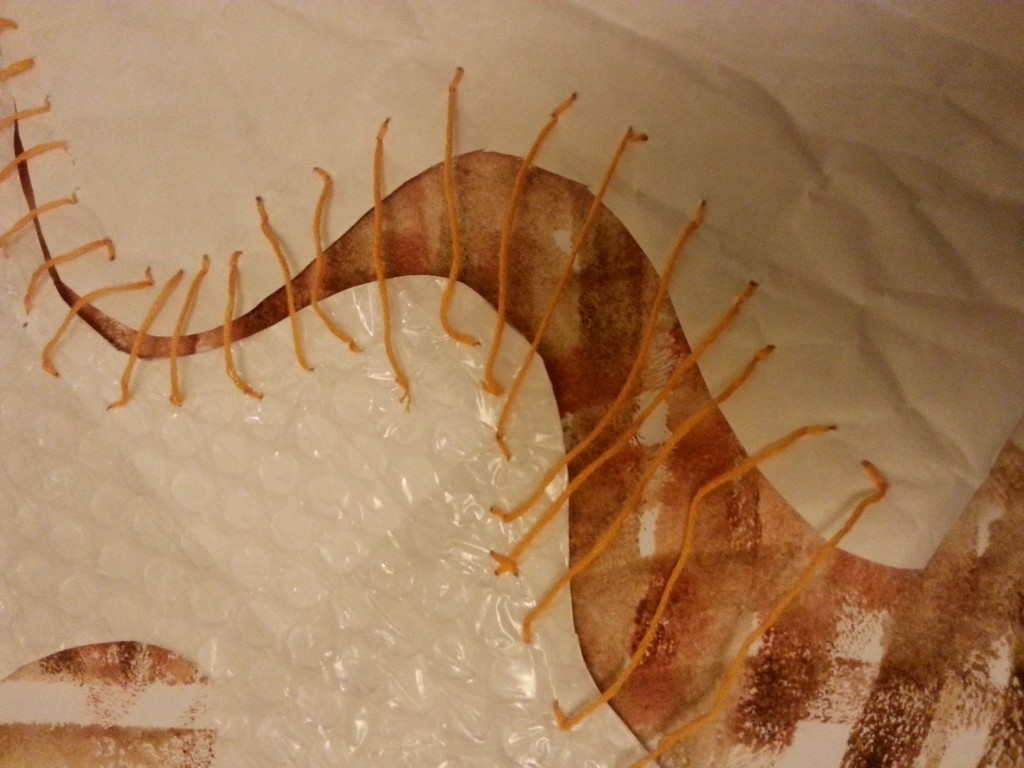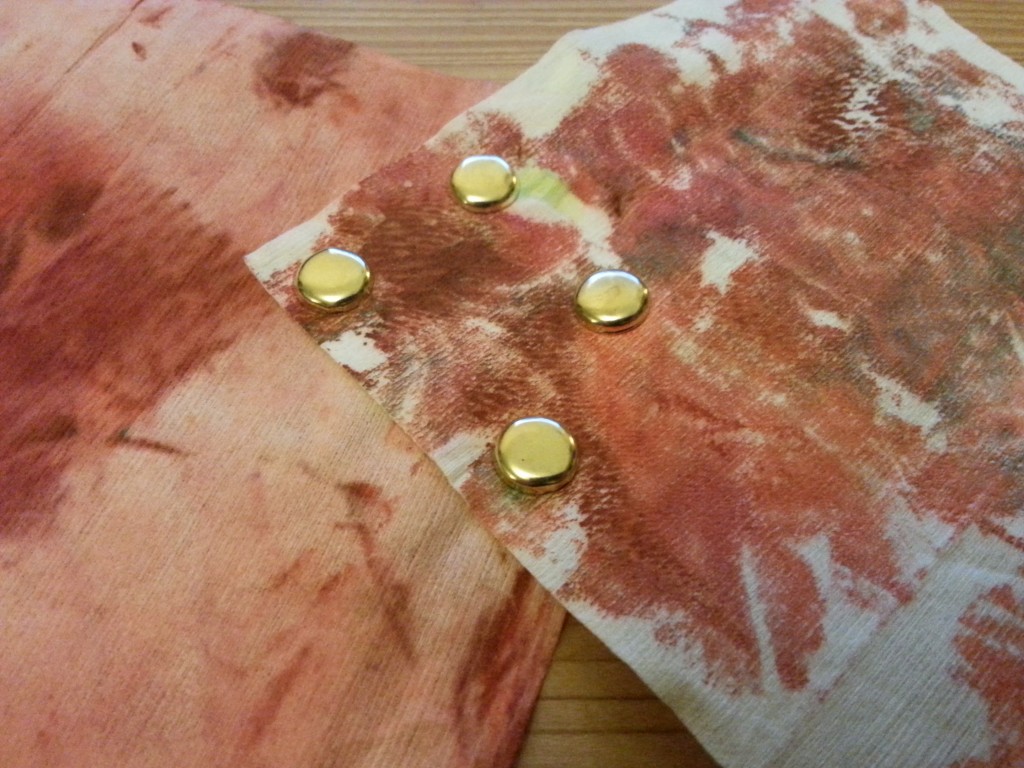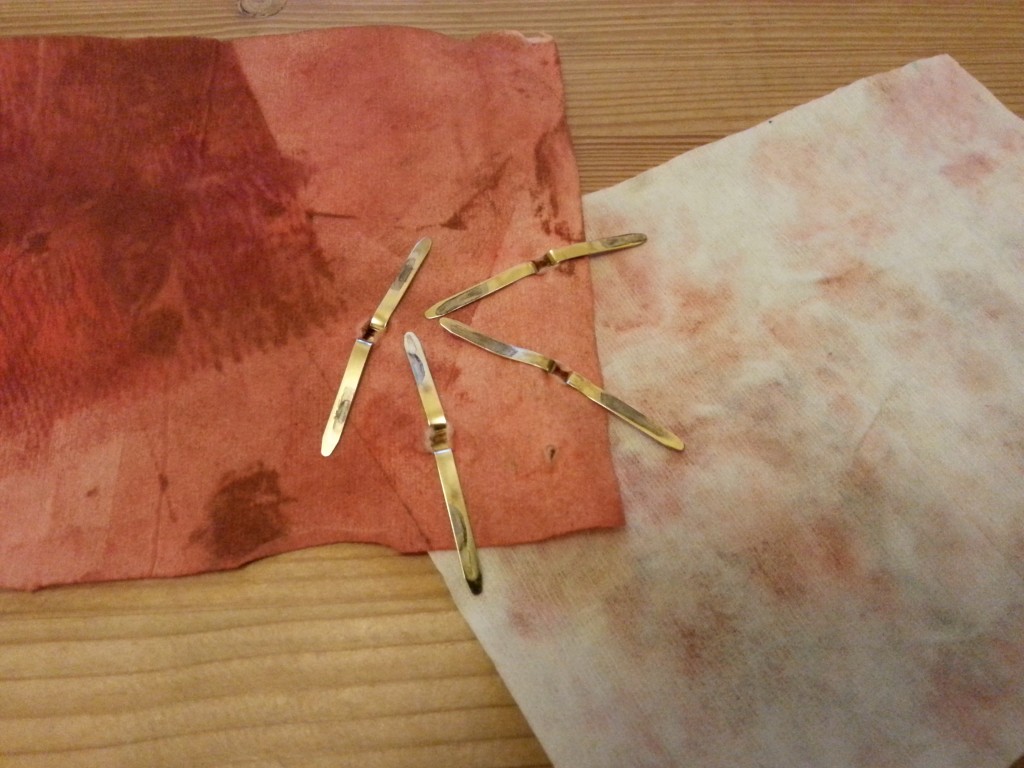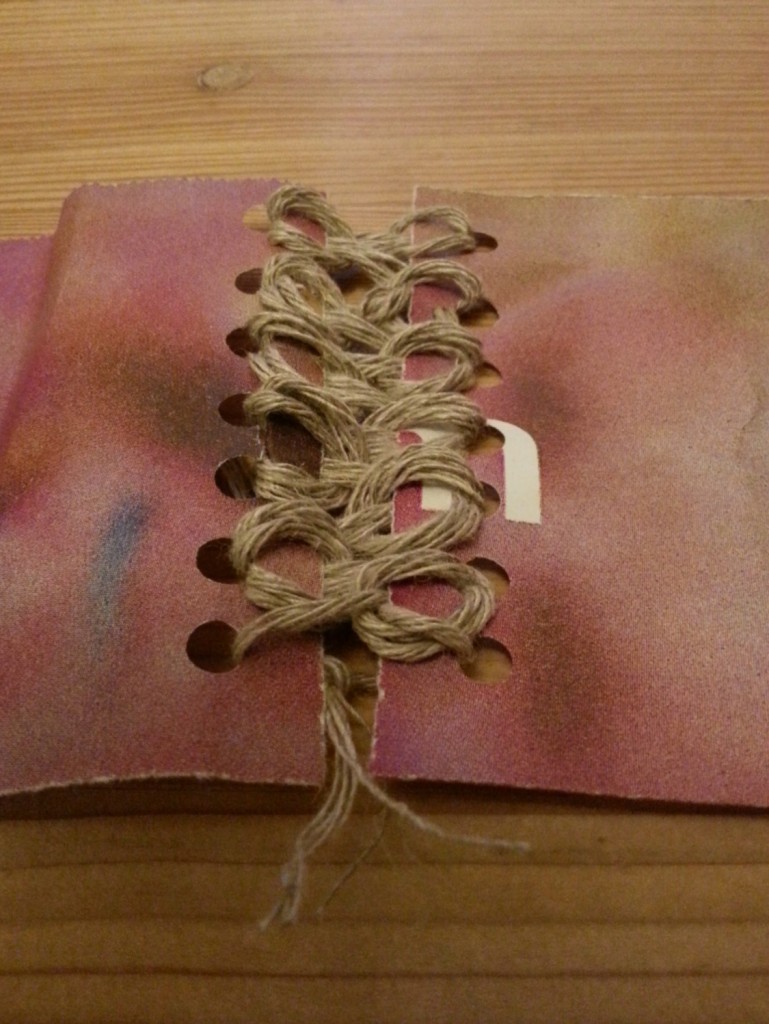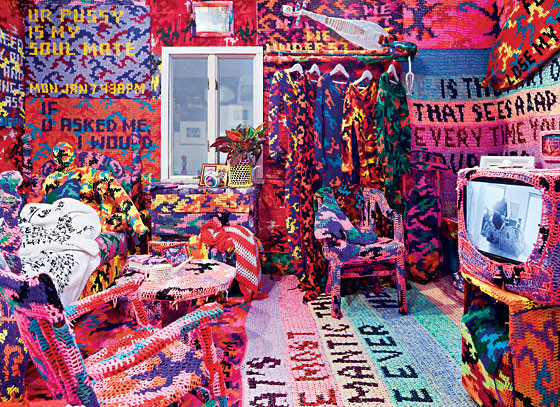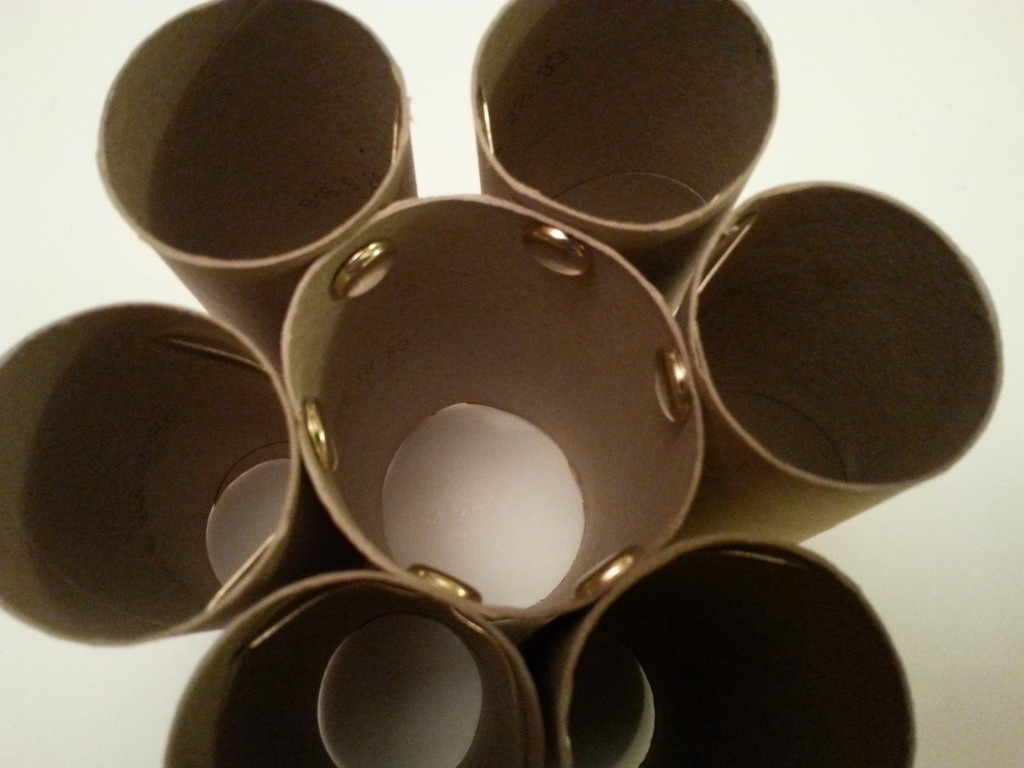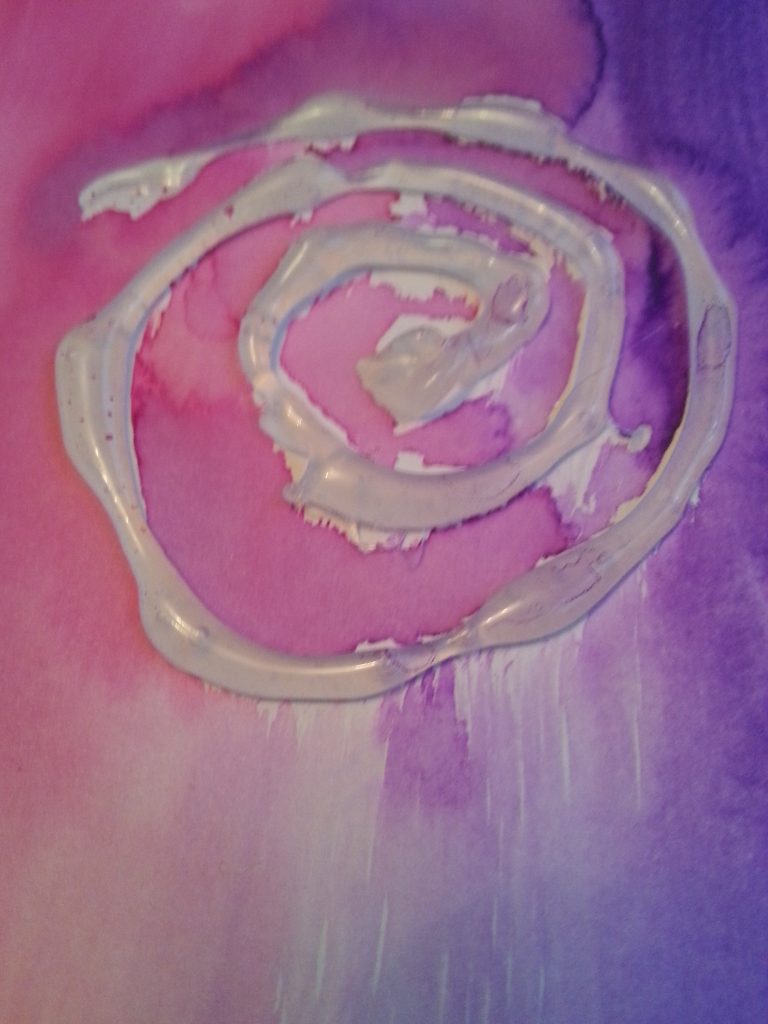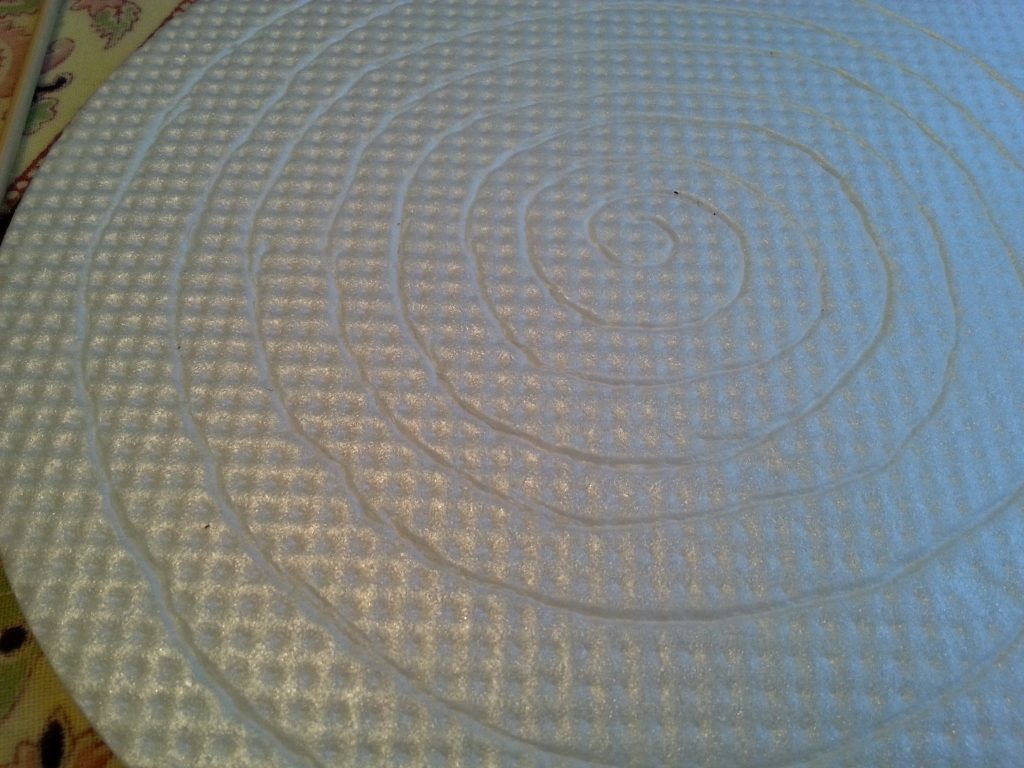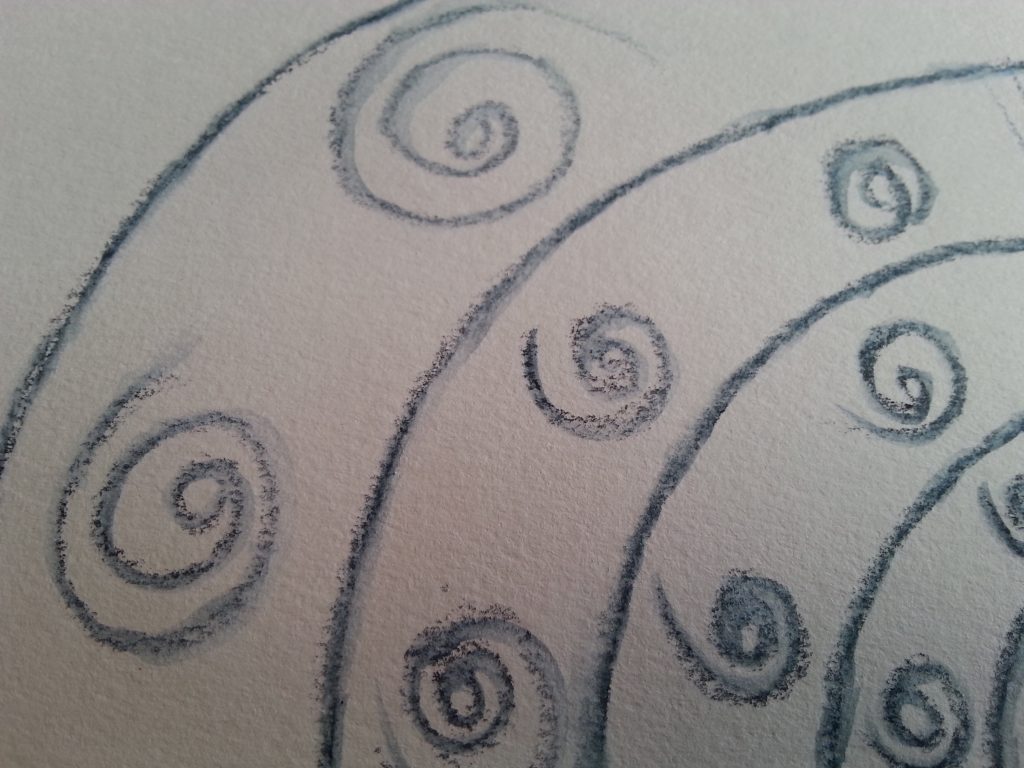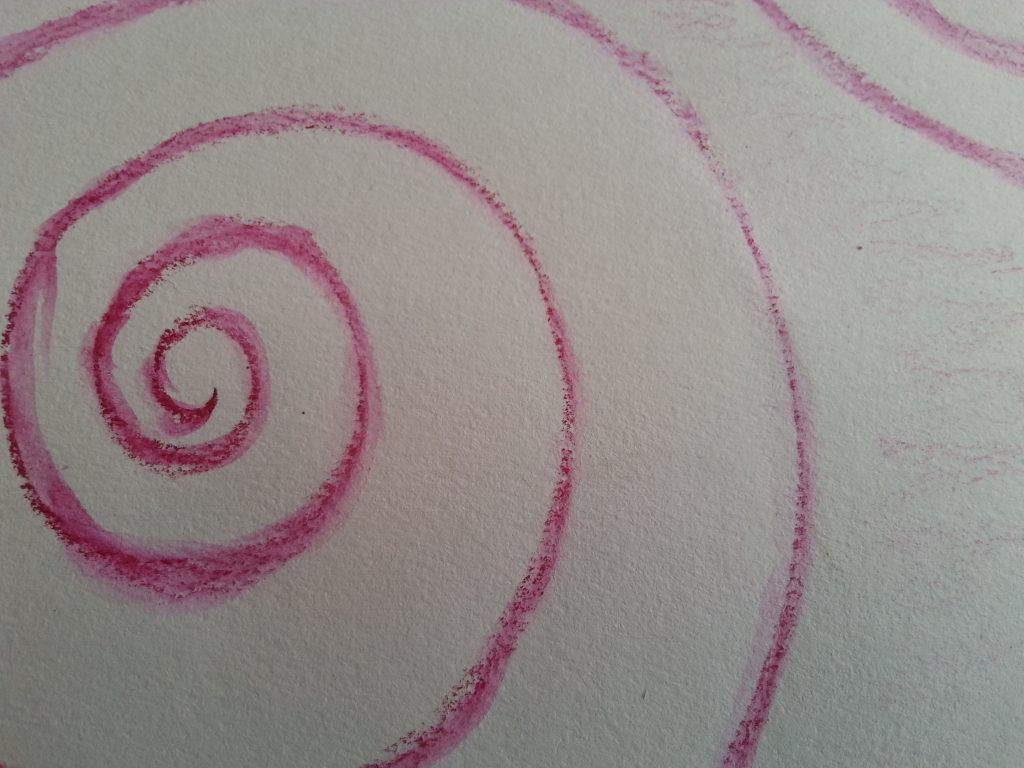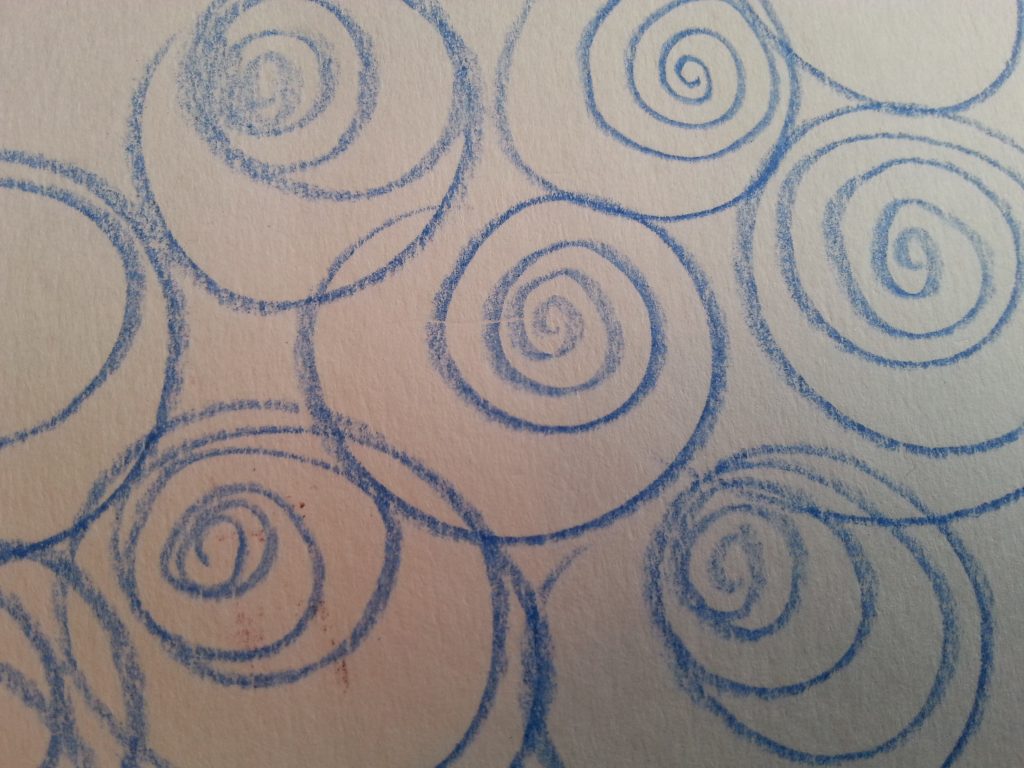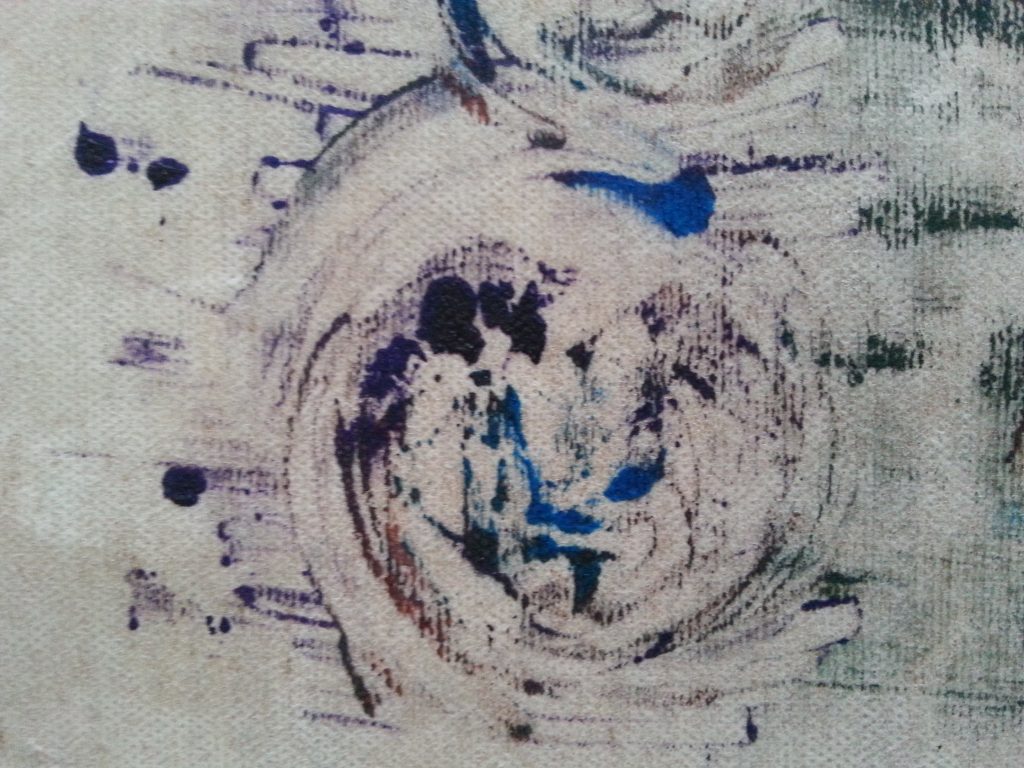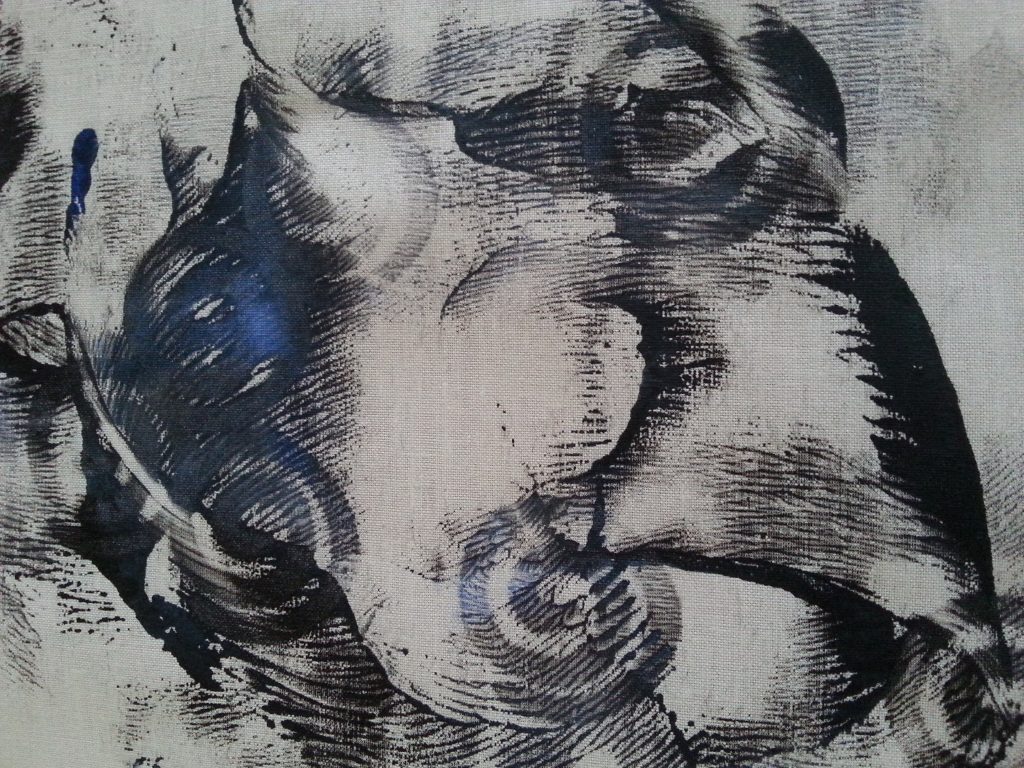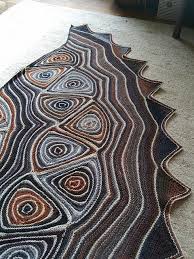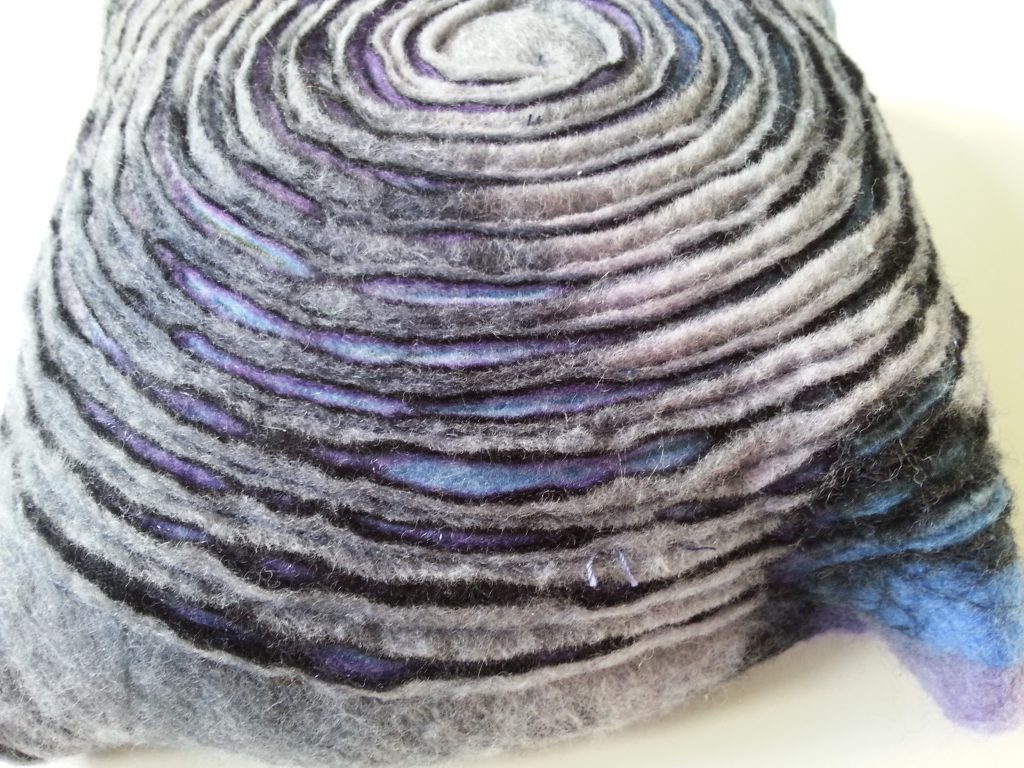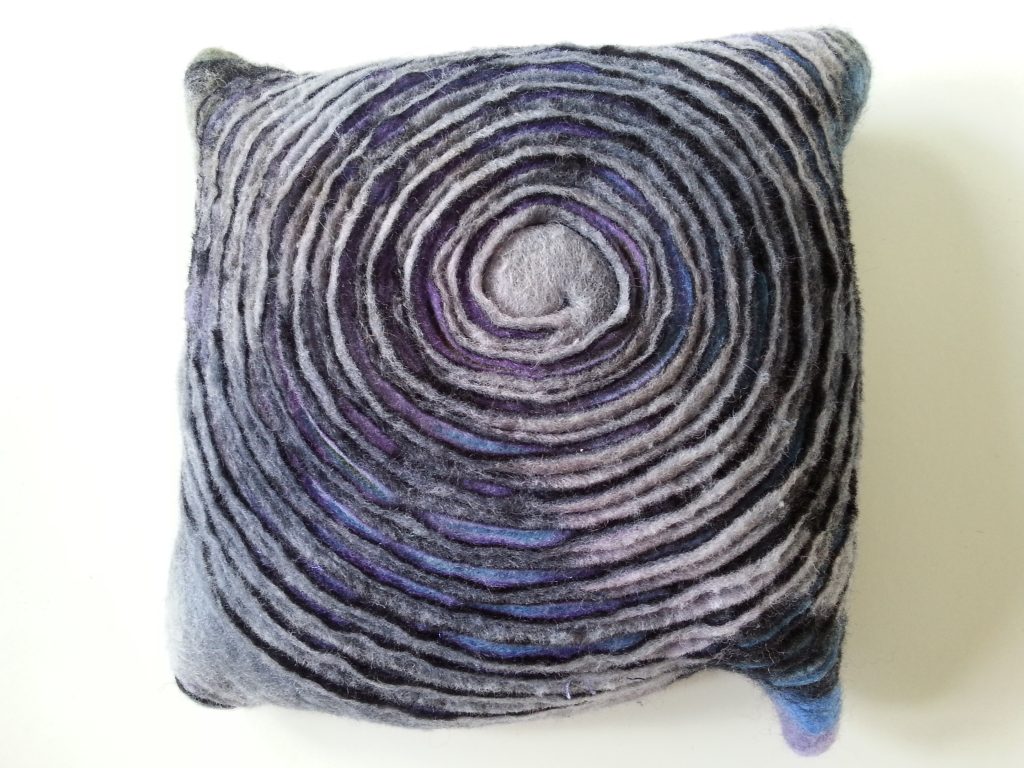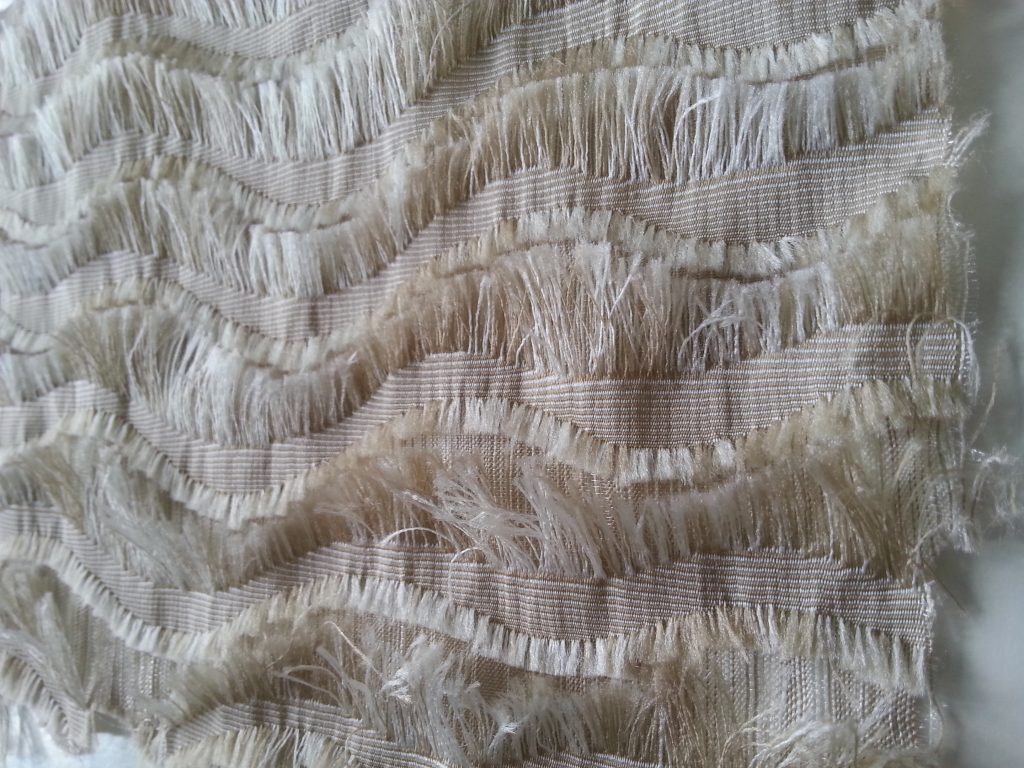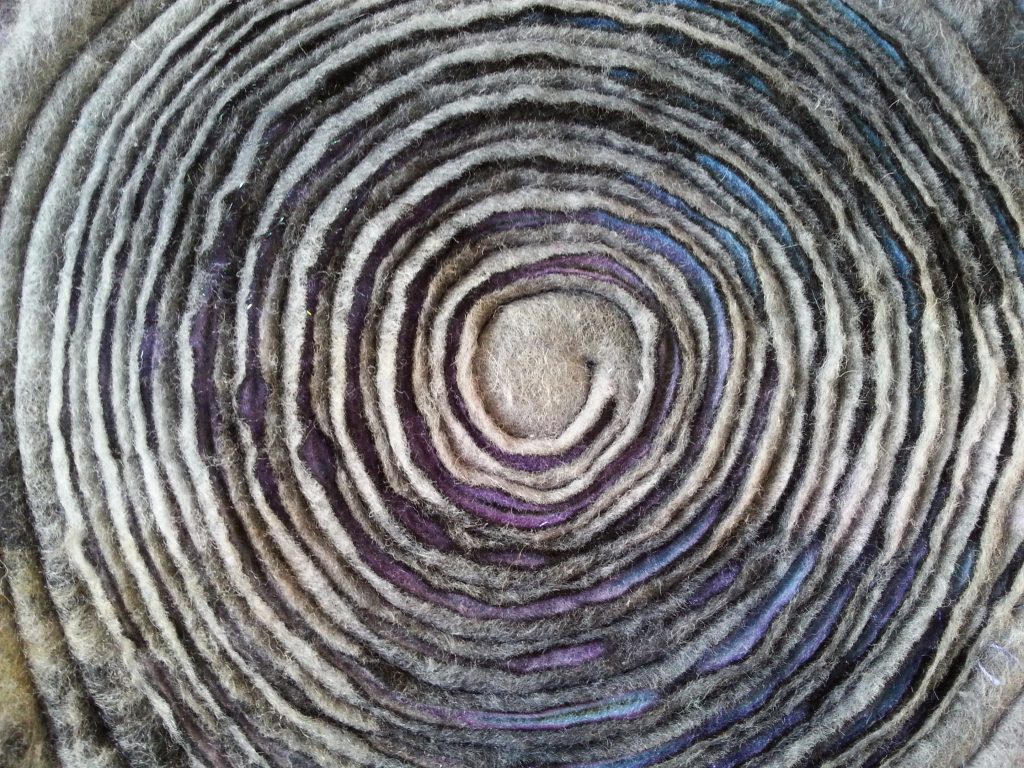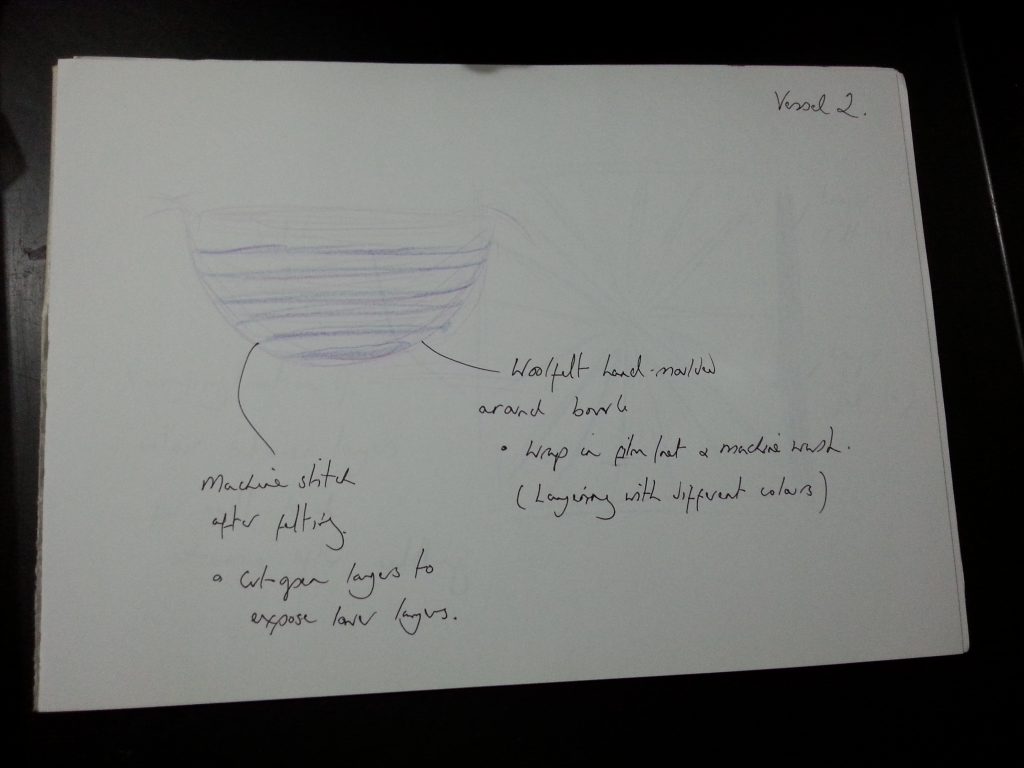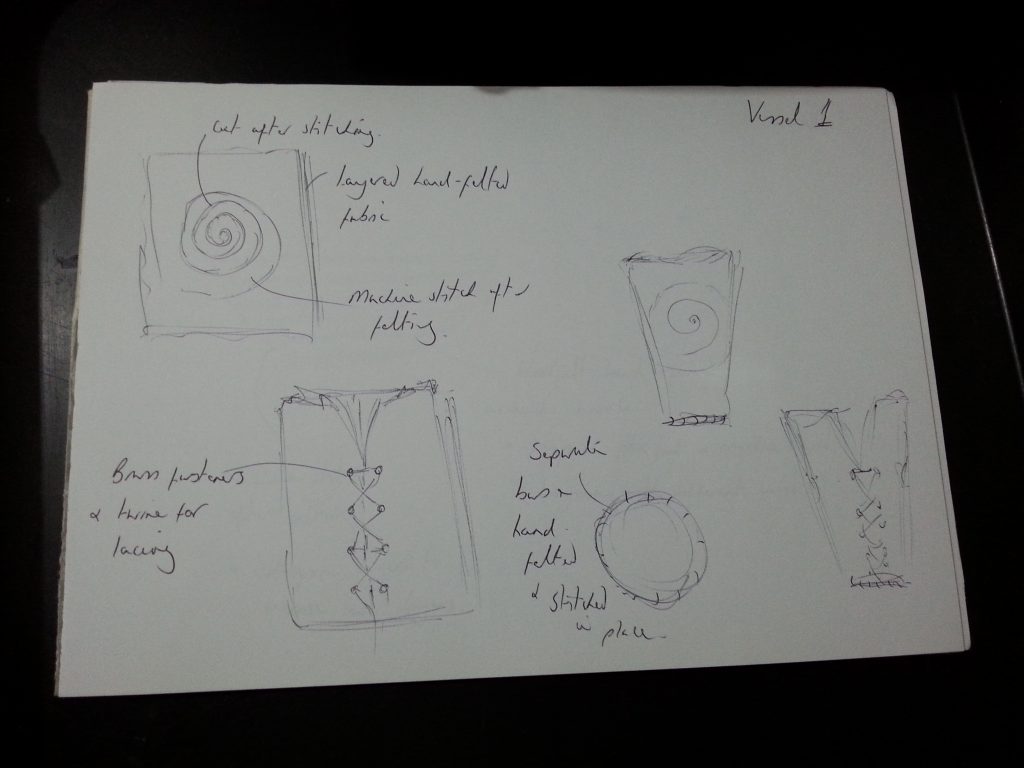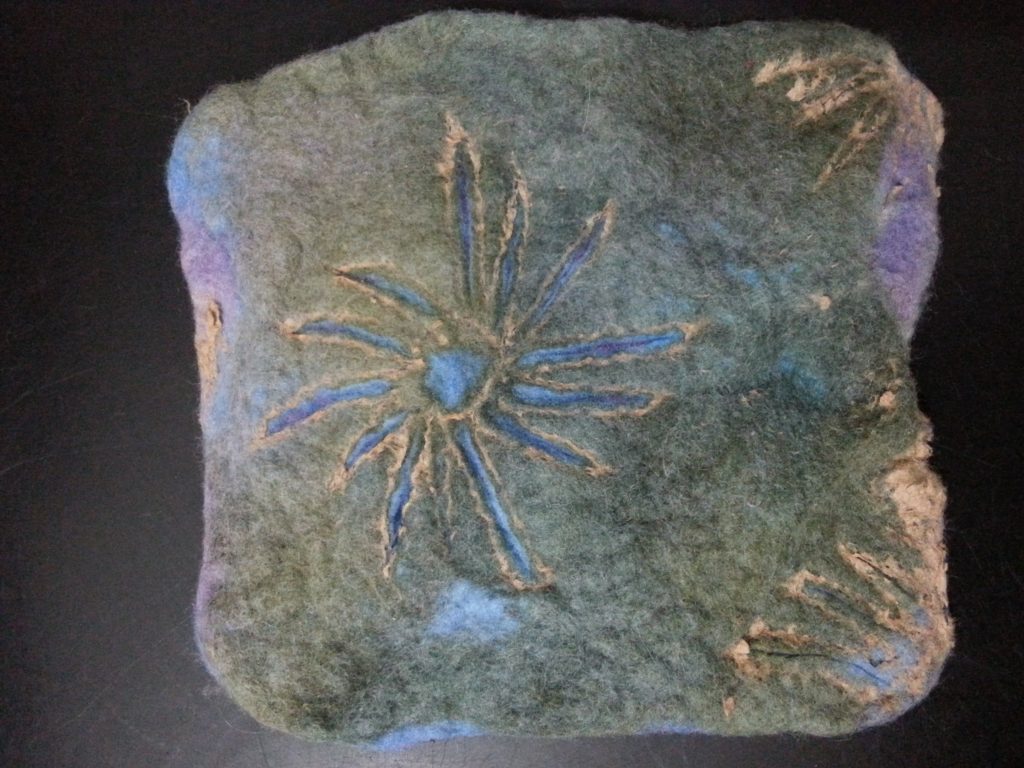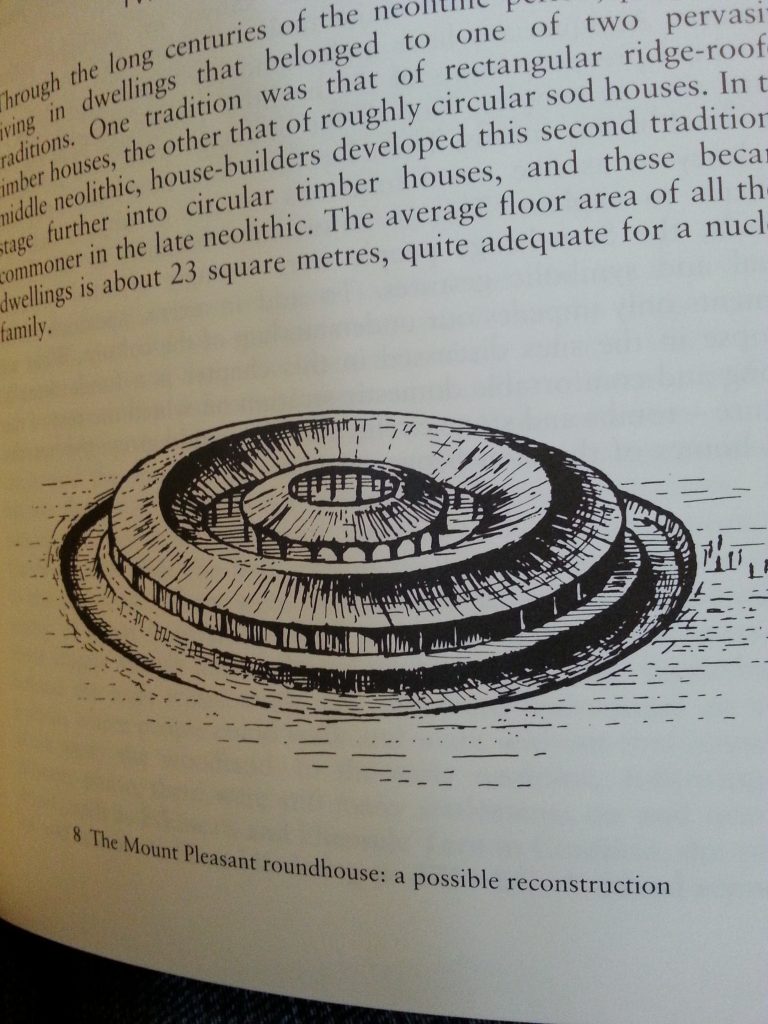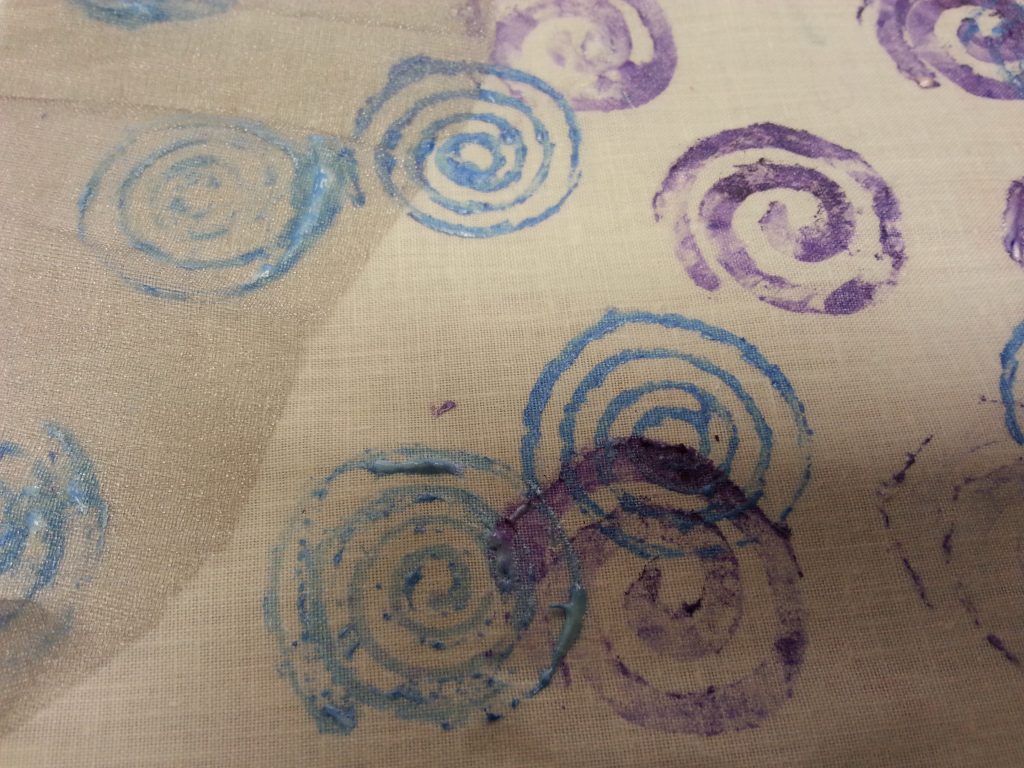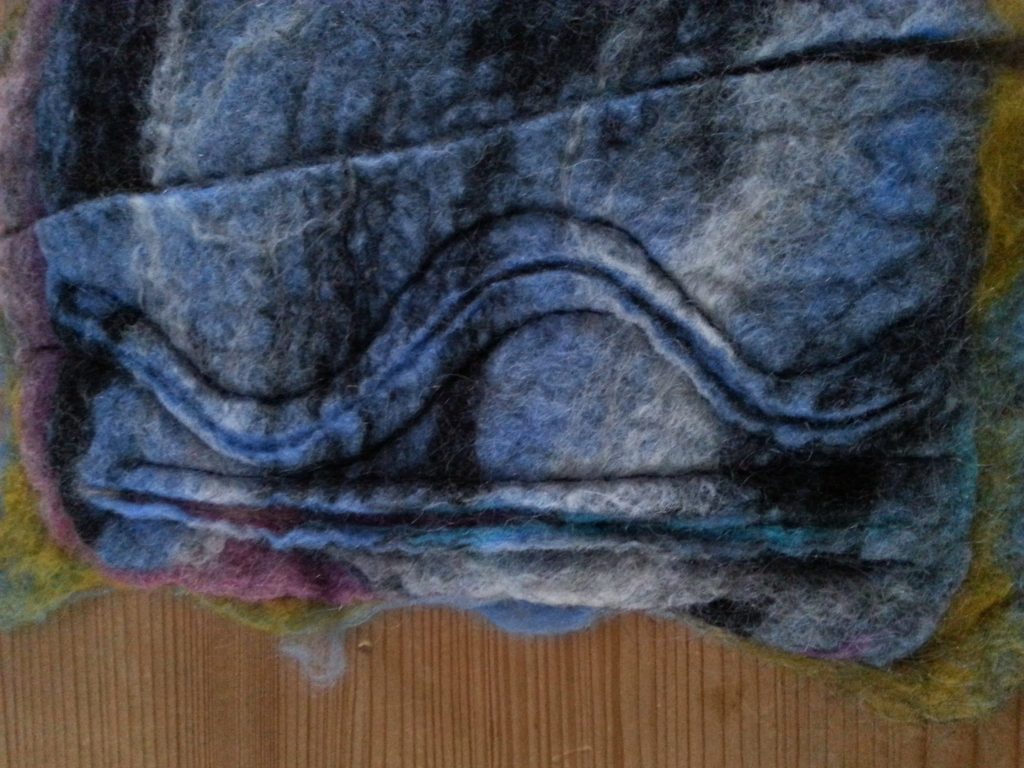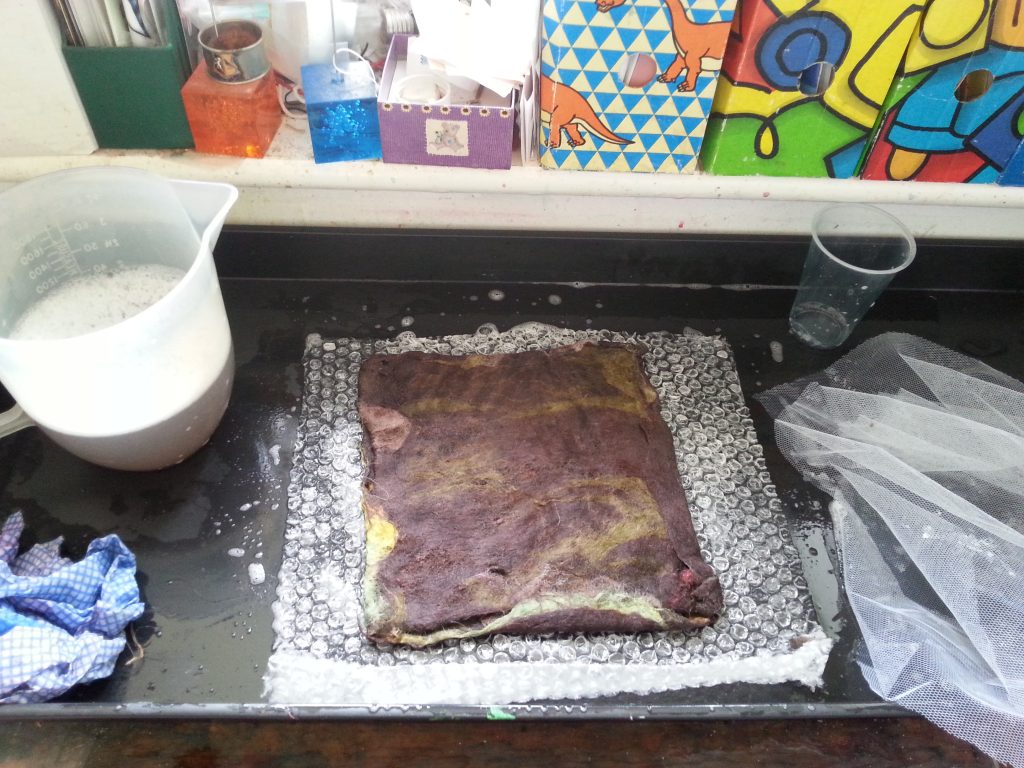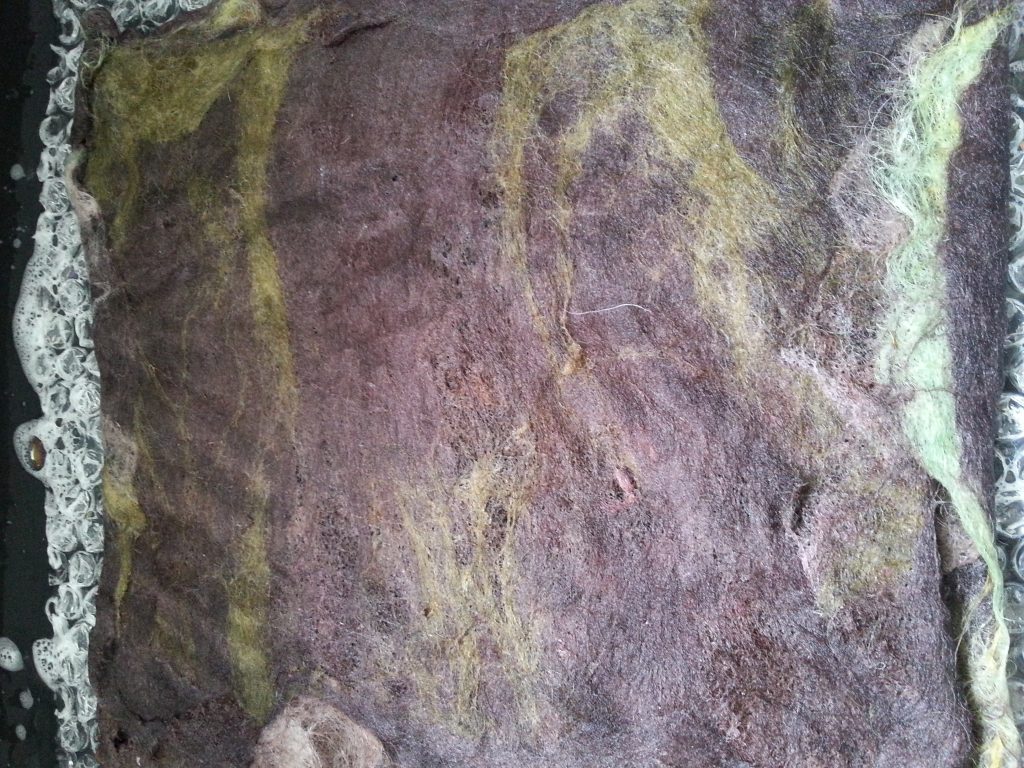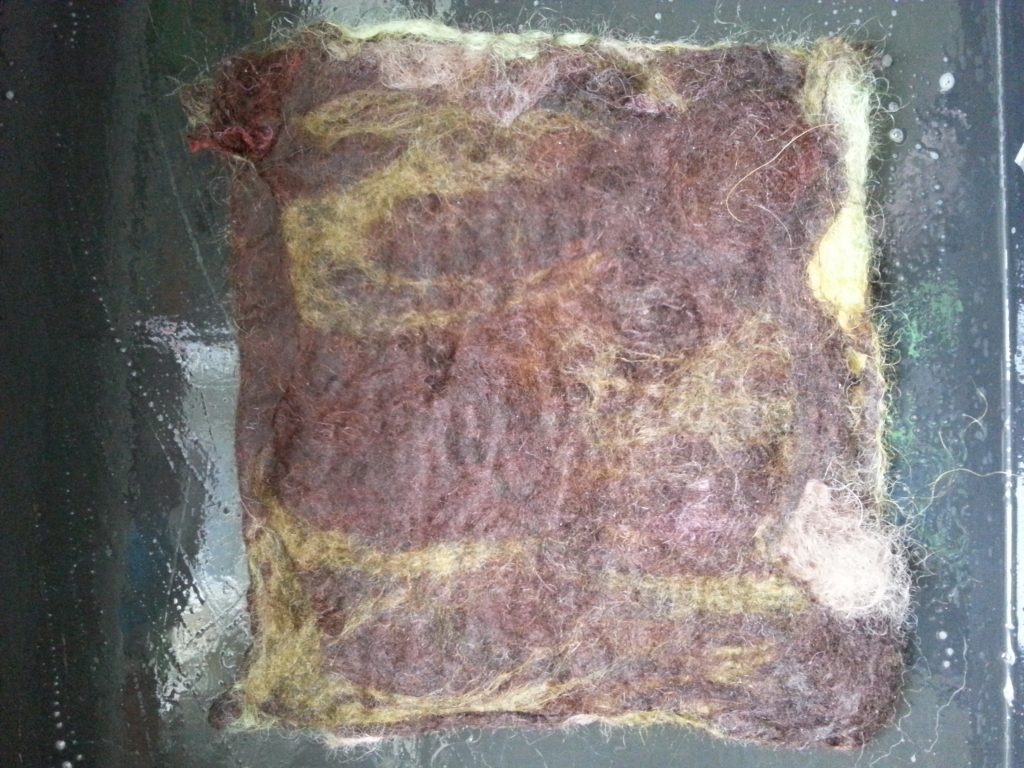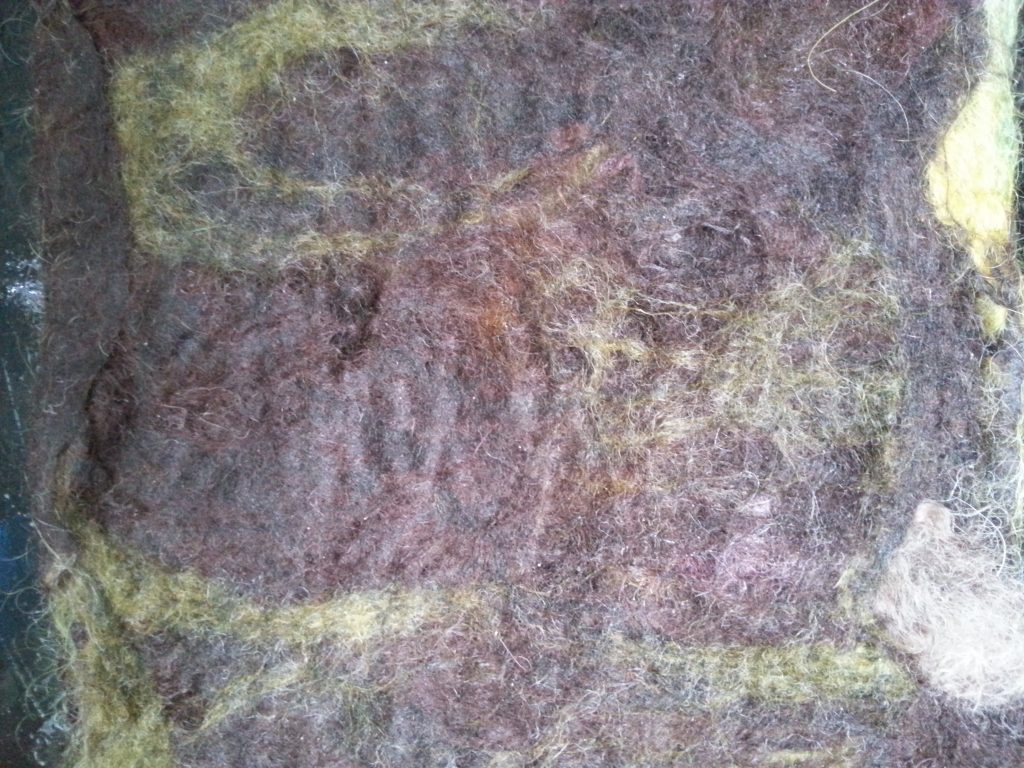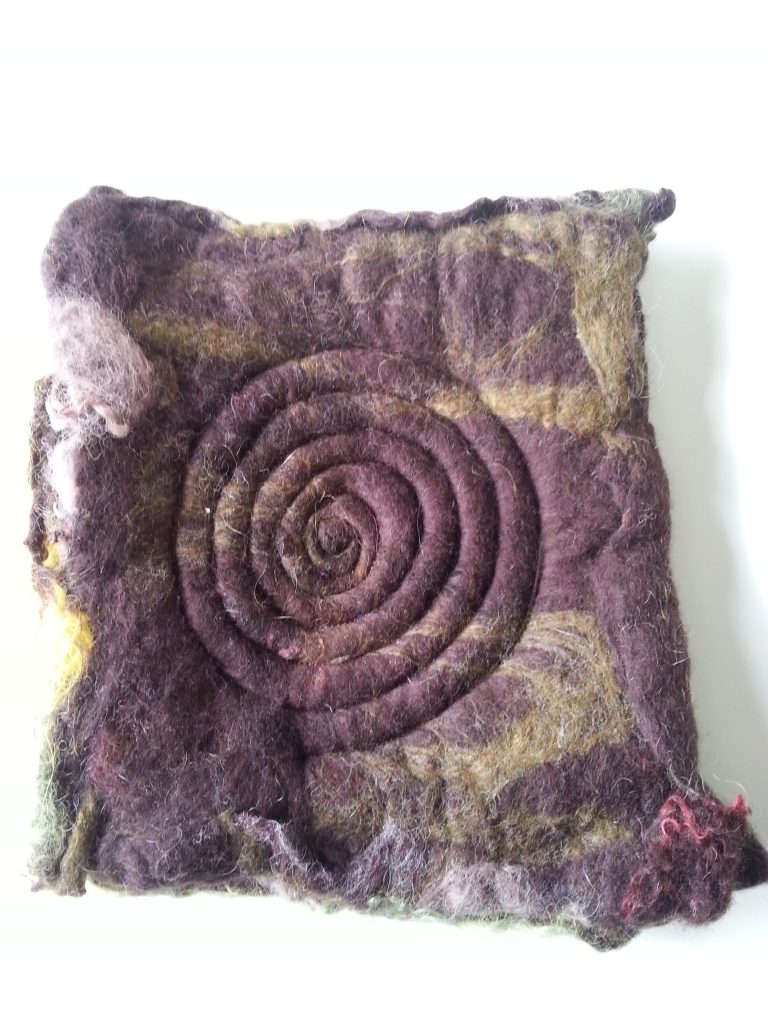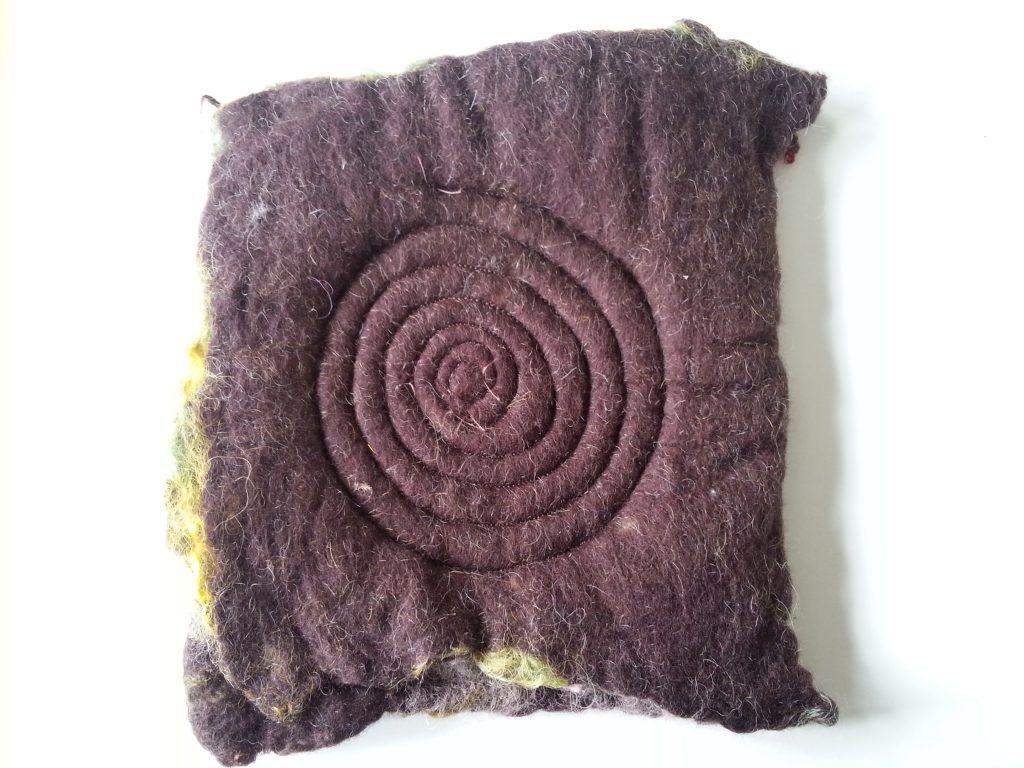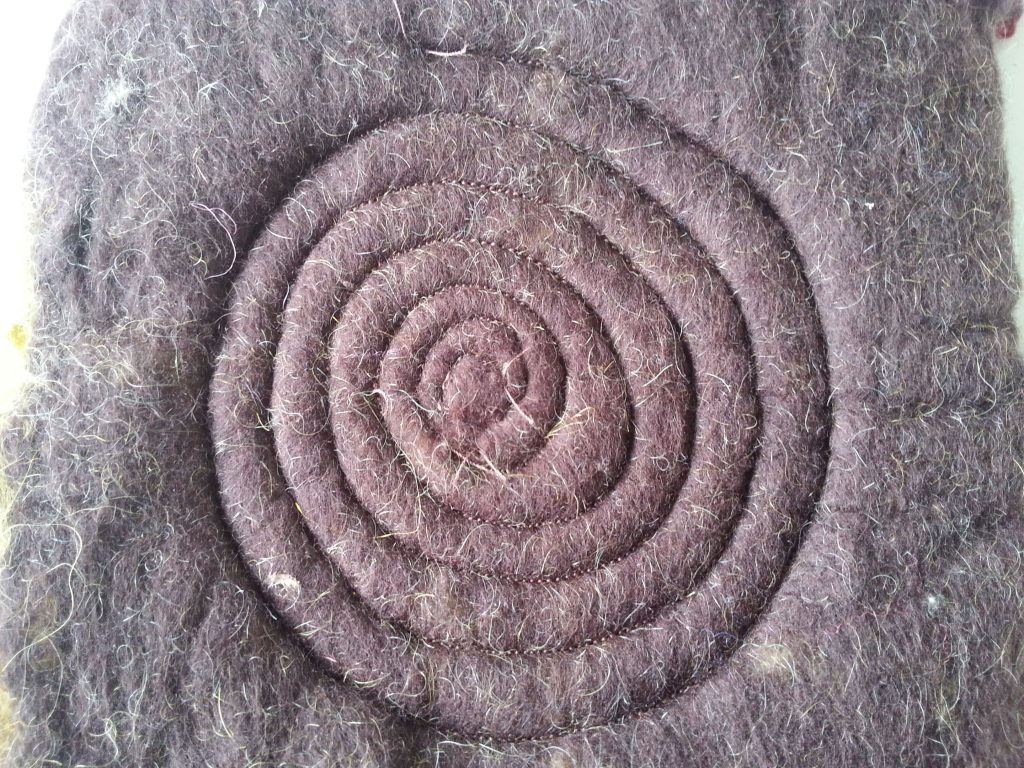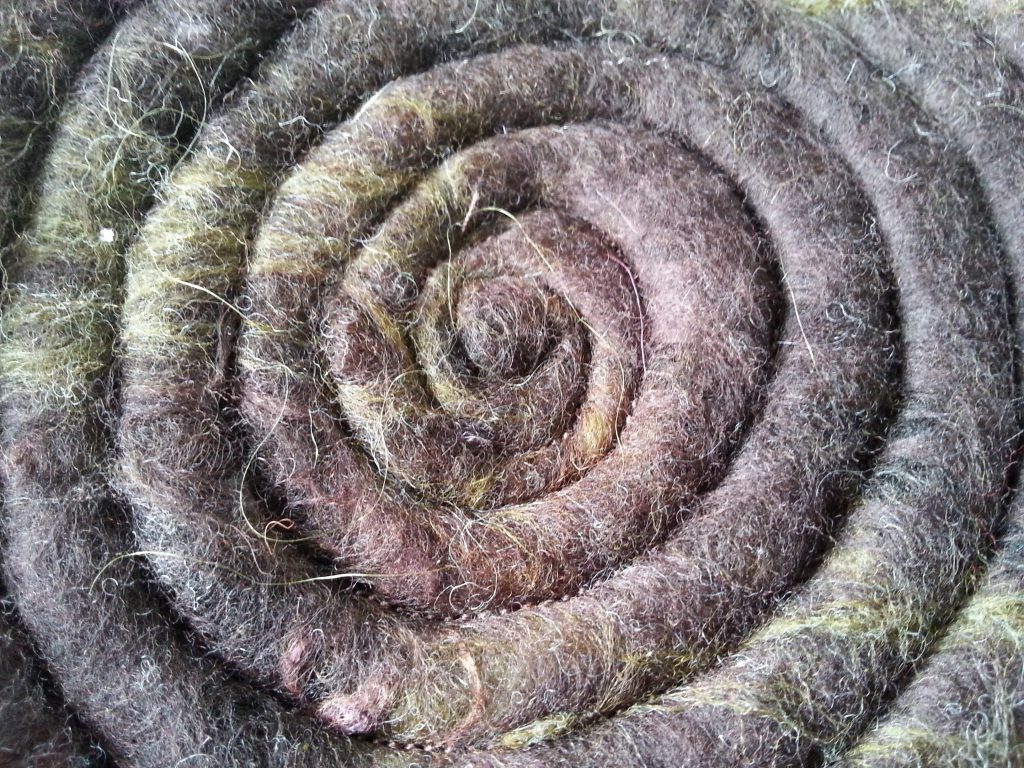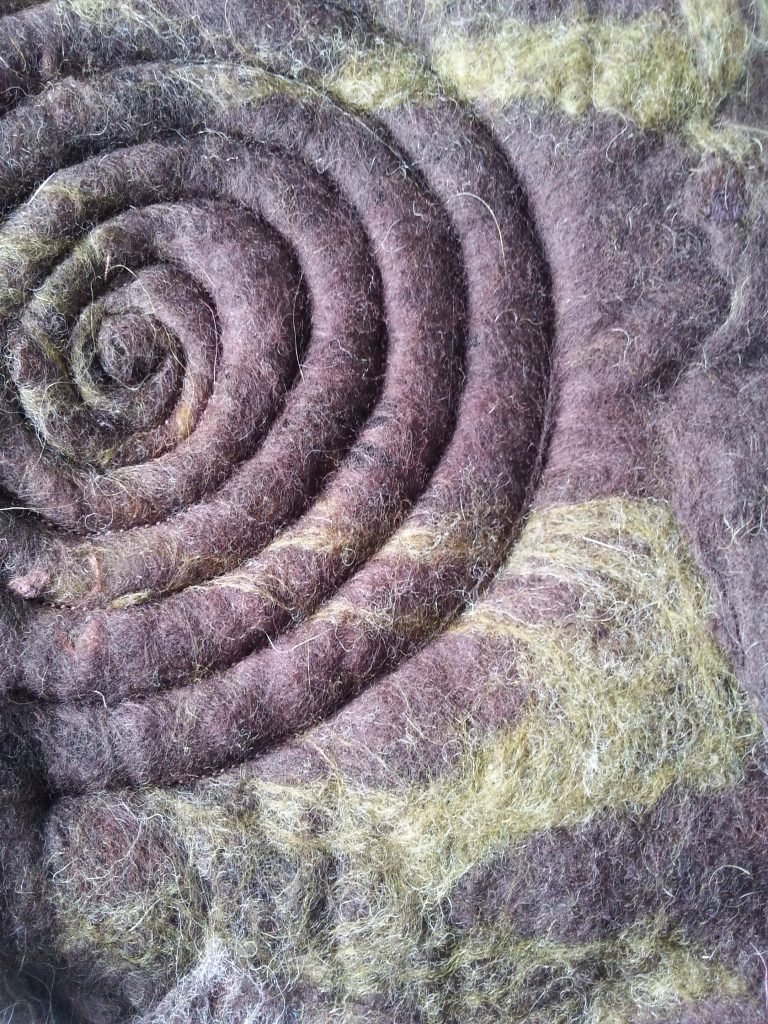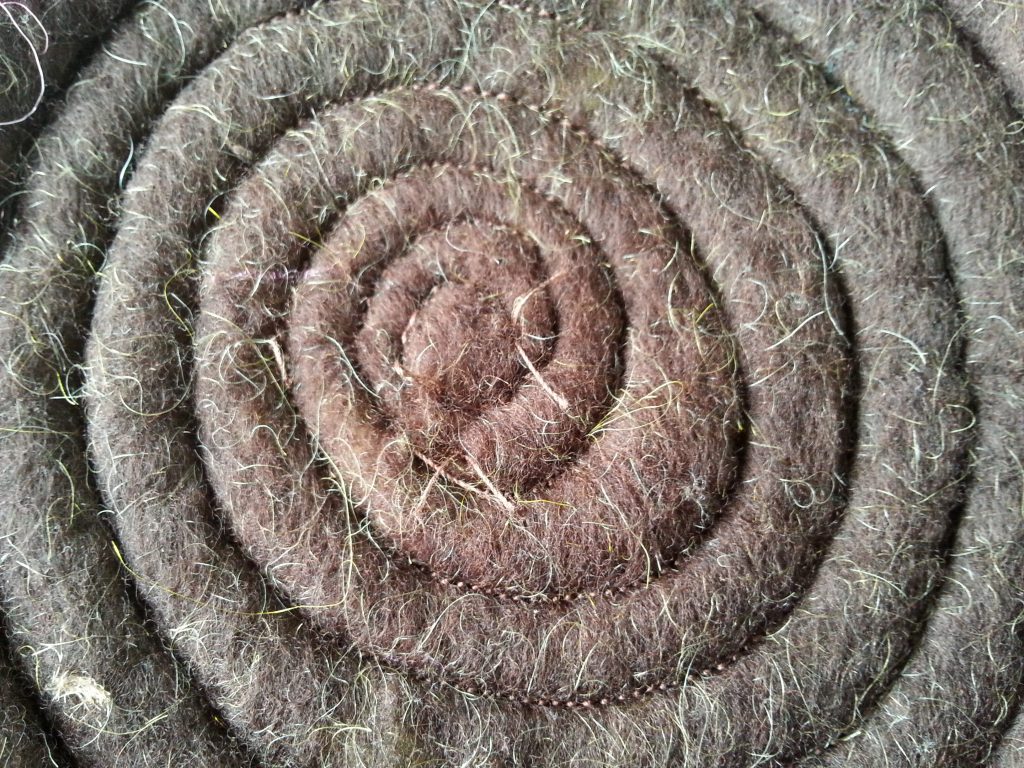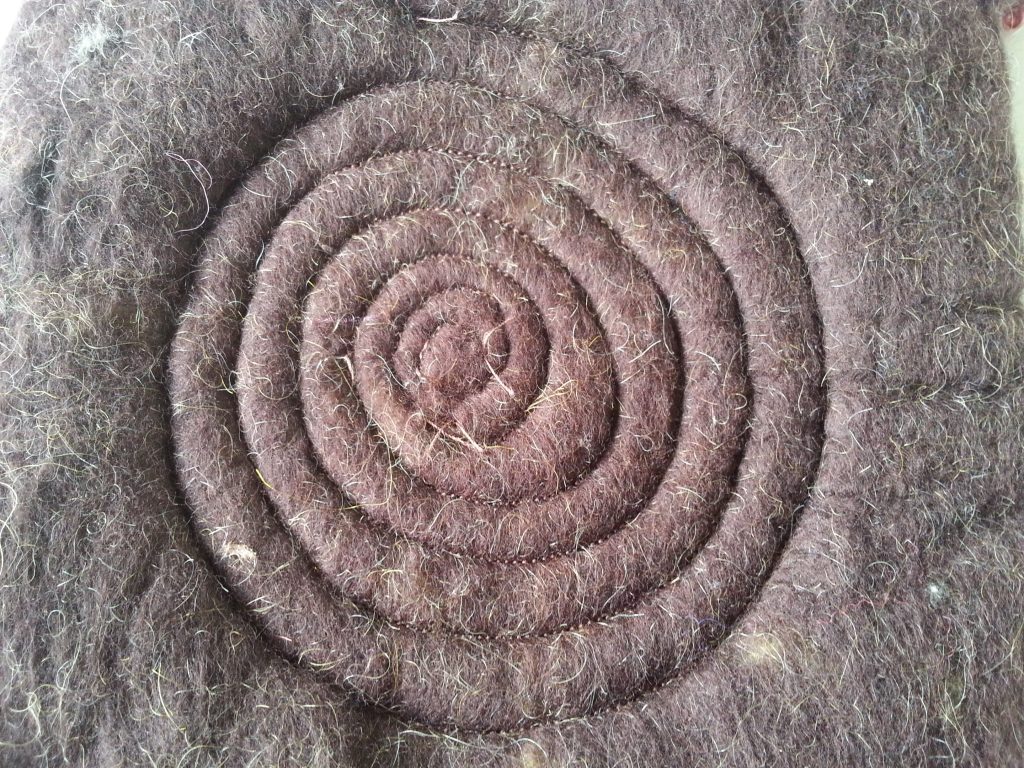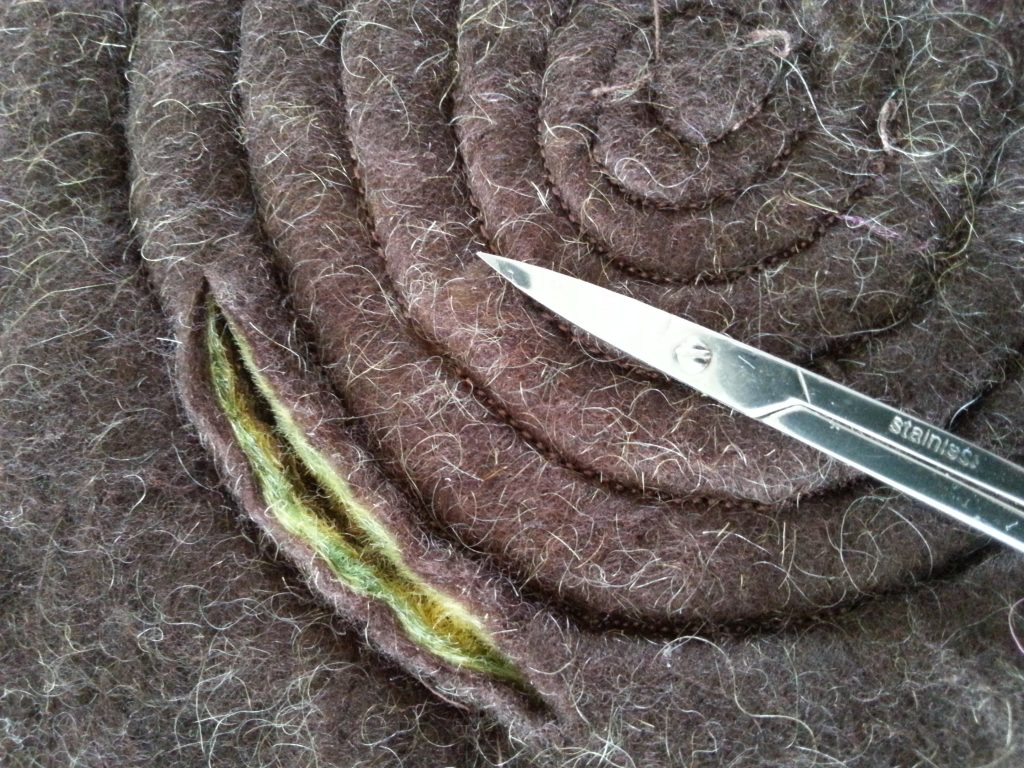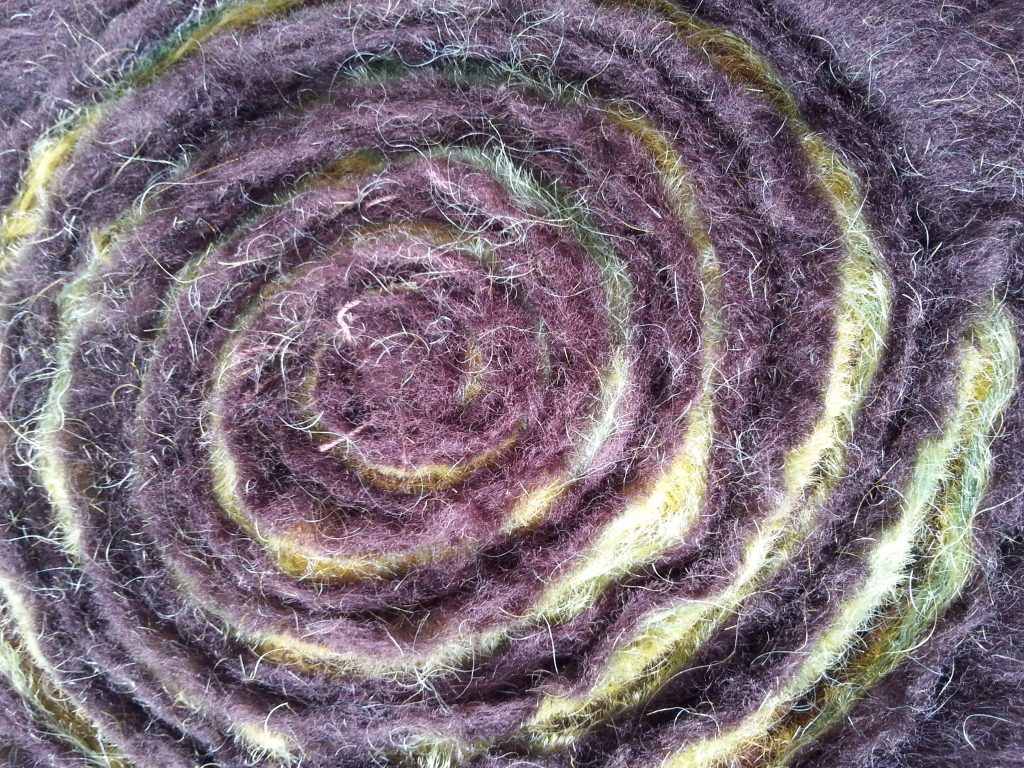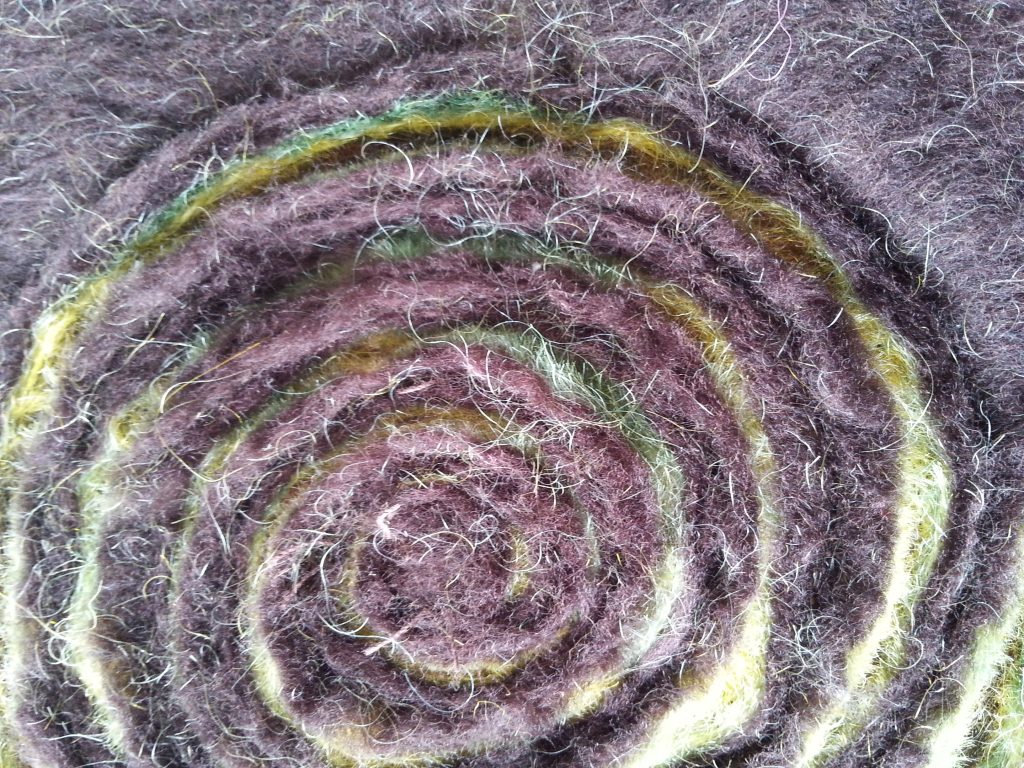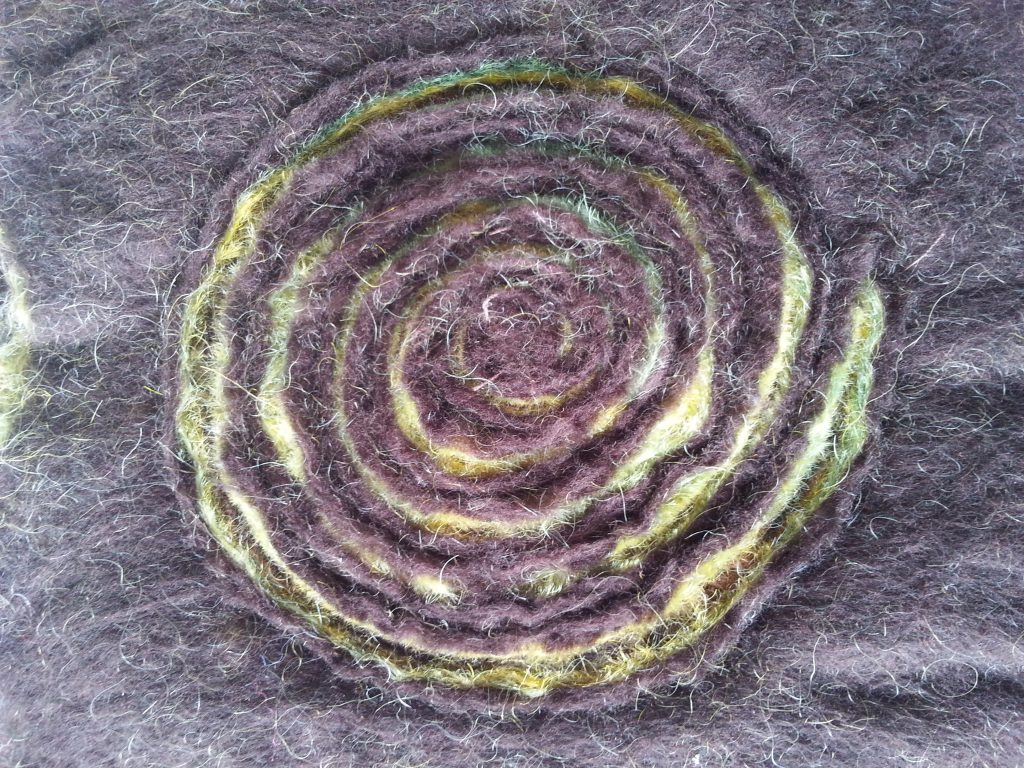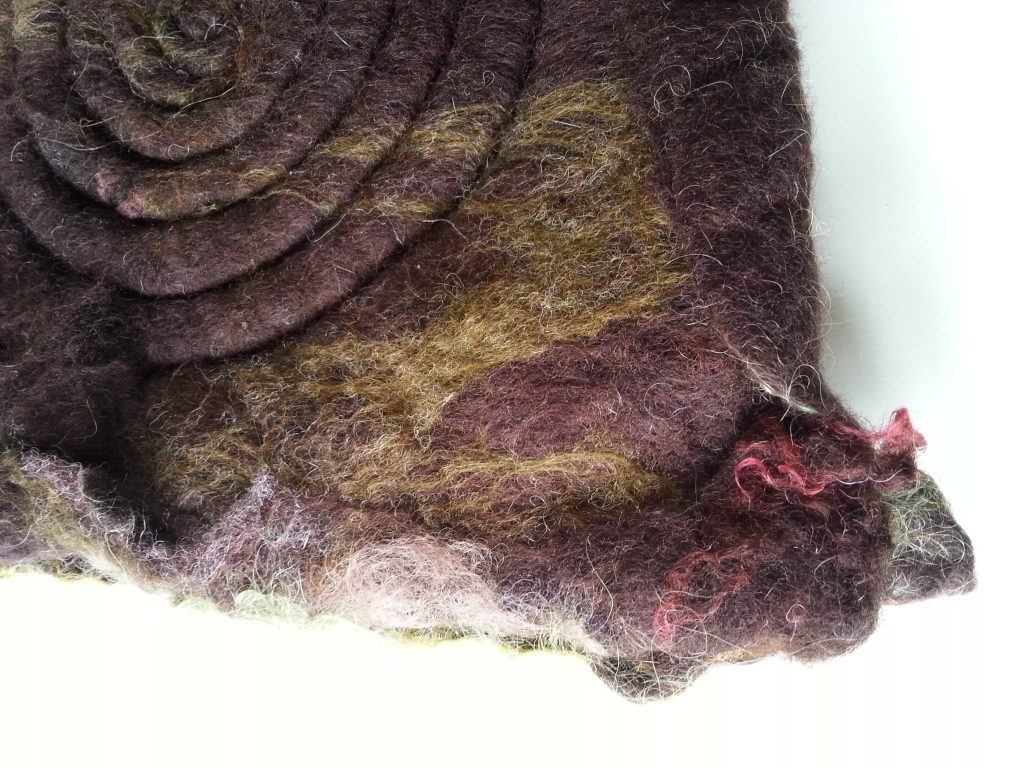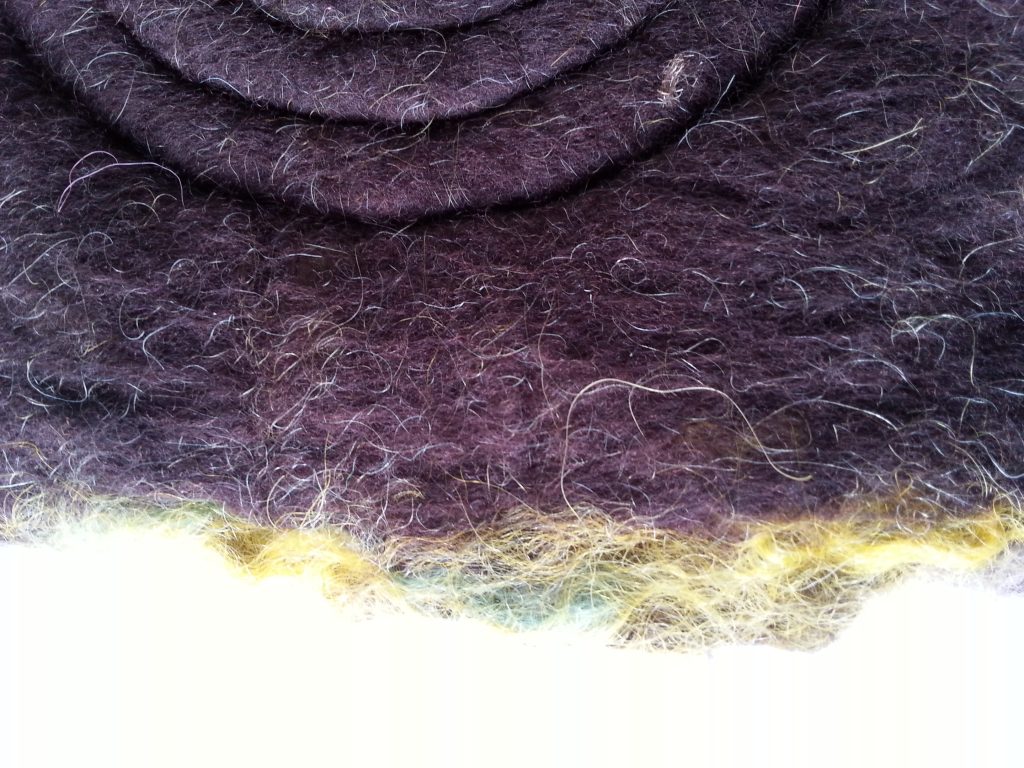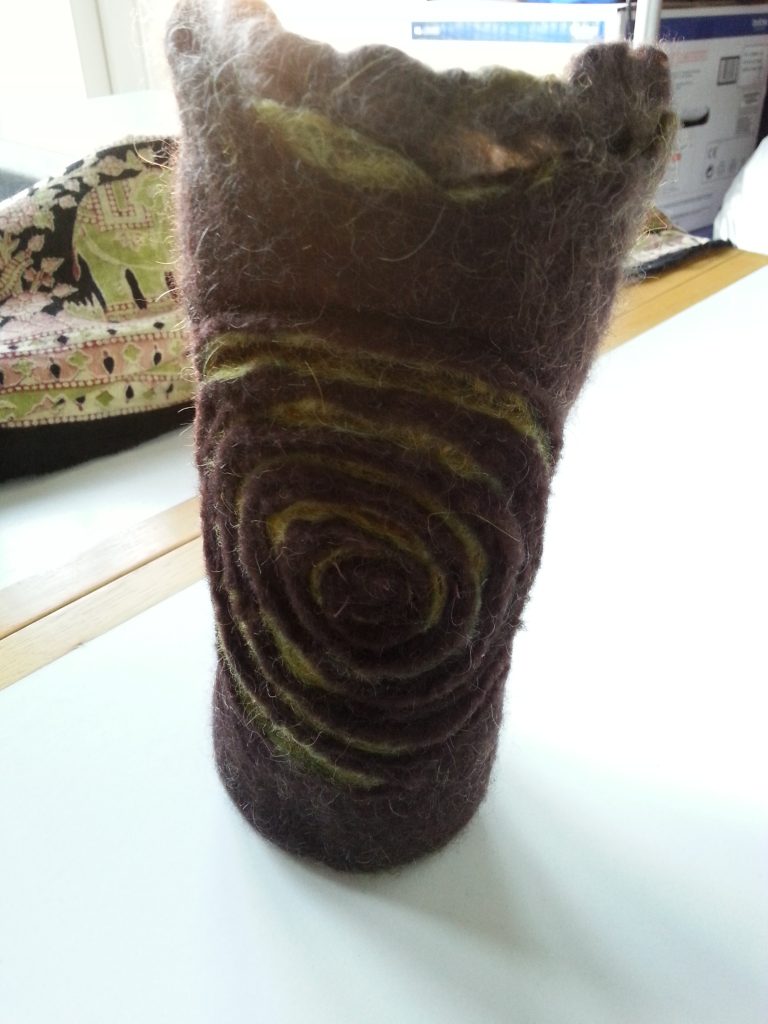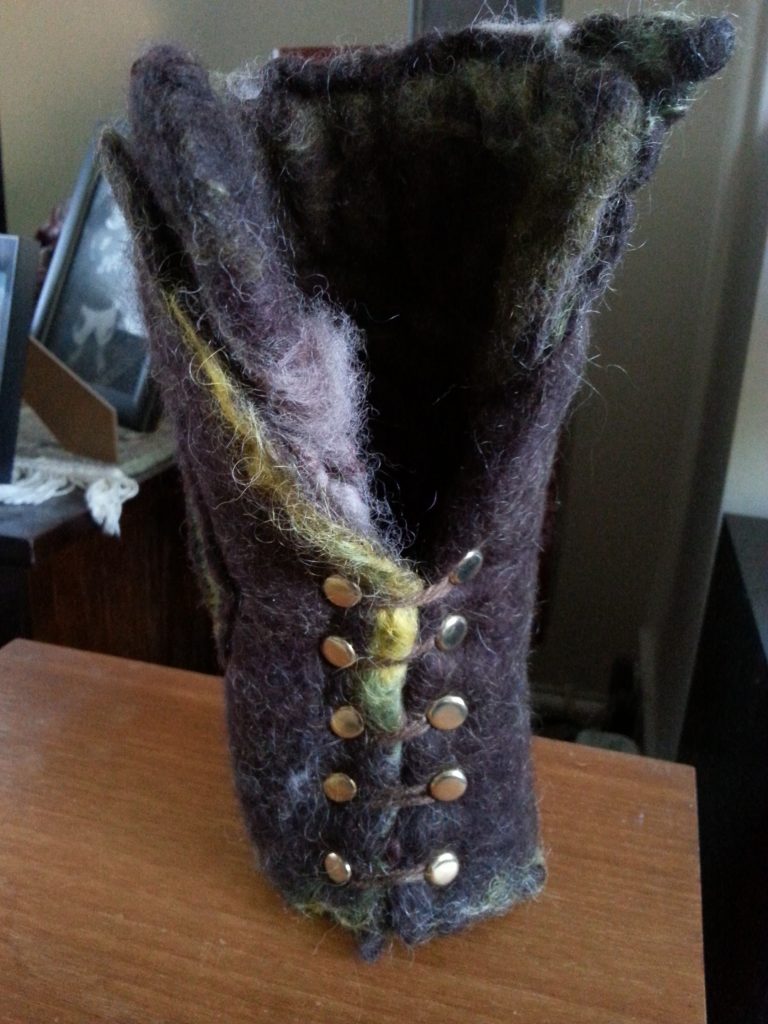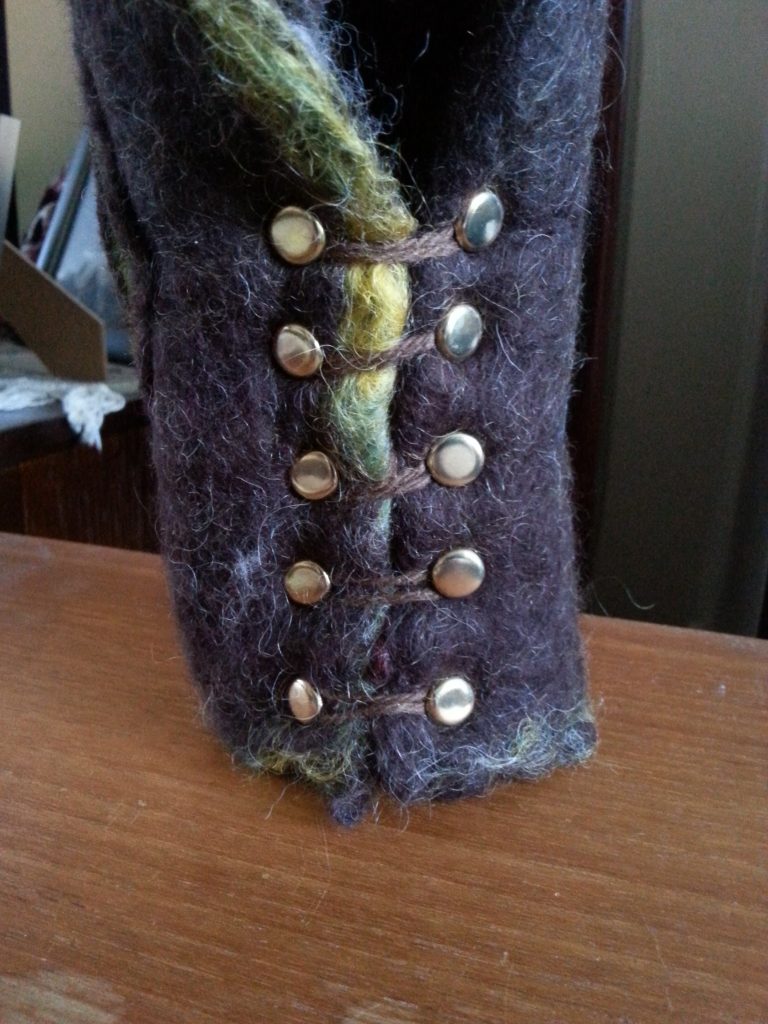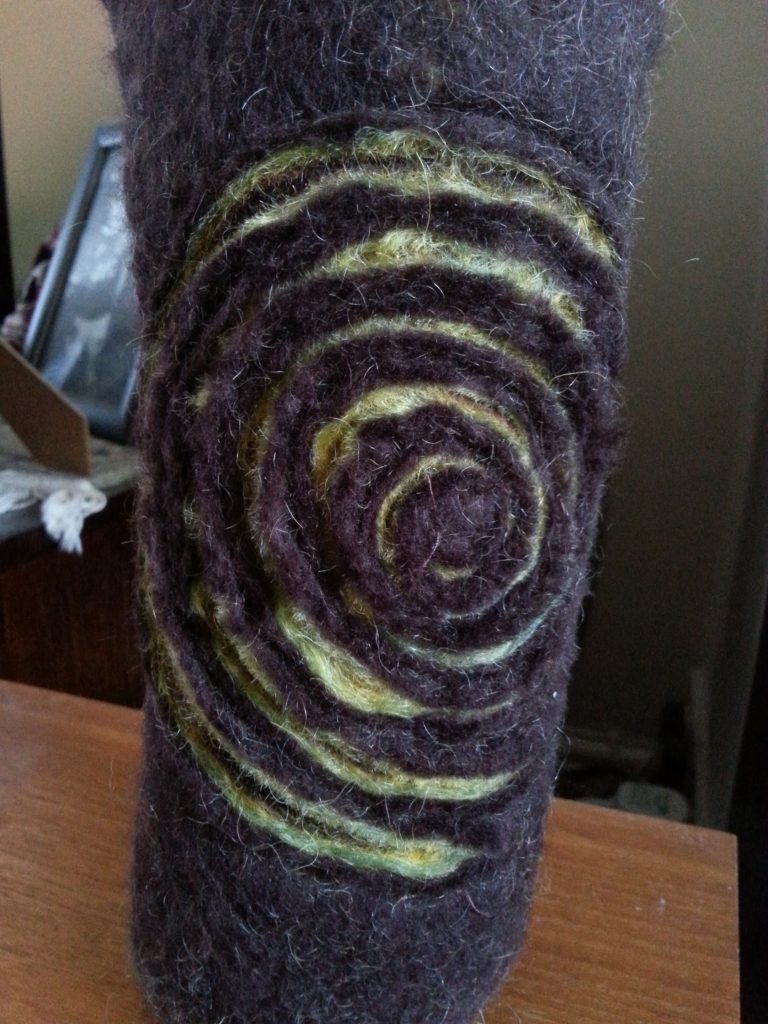For this final sample I pulled together the key elements I wanted to develop in the piece:
- MMT Assignment 4 – Monoprinting – Exercise 4 – Working with stencils
- MMT Assignment 4 – Monoprinting
- MMT Assignment 4 – Monoprinting
- MMT Assignment 4 – Monoprinting
- Embossing with golden medium
- Wetfelt 03
- Knit-felt 04
- Project 1: Circular ribs
- Sketchbook ideas
- Gelli-printed wipes and paper fasteners
- Gelli-printed wipes and paper fasteners reverse
- Paper and twine
- Crocheted apartment, Brooklyn Street Arts
- Cardboard tubes and paper fasteners
- Glue gun on paper – overpaint with koh-i-noor watercolour ink paints
- Polystyrene pizza base – design scratched with kebab skewer
- Spiral stamp onto relief paste – inktense sketch
- Spiral stamp onto relief paste – inktense sketch
- MMT Assignment 3 – Sketchbook
- MMT Assignment 4 – Monoprinting – Exercise Two – Back Drawing – Finger printing
- MMT Assignment 4 – Monoprinting – Exercise Two – Back Drawing – Rubber stamp
- Svetlana Gordon – Jewel Dragon
- Felt – Dyeing and Felting Using a Form – Sample 5 – Felted Vessel
- Assignment 5 – A Final Piece – Prototype
- Felt – Colour Layering & Cutting – Sample 2
- MMT Assignment 5 – Final Piece – Sampling – Felt
I began with a selection of wool fibres, choosing colours from nature to reflect the concept of ancient carvings, hewn from the rough rock. Layering the colours of browns, golds, greens I hand-felted the fibres so that they would be sturdy enough to stand up but not too densely felted. From the earlier sampling work I had established that felting and fulling too hard makes it difficult to get the layering right and prevents the layers from being properly visible. Furthermore, softer edges were sought to give the impression of patterns carved with crude implements, eroded over the years by the elements.
Once felted and dried I machine-stitched a freehand spiral, not making it too perfect so as to reflect natural erosion. The use of different breeds of sheep in the hand-dyed fibres meant that the hairier fibres created a rough texture to the surface where they had felted through from the lower layers. Again, this gave a naturalistic, raw feel, steering clear of something that looks manufactured and clinical. The hints of gold and green also convey the impression of moss and lichen on the surface of the stone.
- Assignment 5 – A Final Piece – Prototype
- Assignment 5 – A Final Piece – Prototype
- Assignment 5 – A Final Piece – Prototype
- Assignment 5 – A Final Piece – Prototype
- Assignment 5 – A Final Piece – Prototype
- Assignment 5 – A Final Piece – Prototype
- Assignment 5 – A Final Piece – Prototype
- Assignment 5 – A Final Piece – Prototype
- Assignment 5 – A Final Piece – Prototype
- Assignment 5 – A Final Piece – Prototype
- Assignment 5 – A Final Piece – Prototype
Next the circle was carefully cut open with sharp scissors to reveal the inner layers. The edges were then brushed with a toothbrush to soften and age the ‘carving’ and give it an authentic feel.
- Assignment 5 – A Final Piece – Prototype
- Assignment 5 – A Final Piece – Prototype
- Assignment 5 – A Final Piece – Prototype
- Assignment 5 – A Final Piece – Prototype
This first piece was to be the body of the vessel. It was wrapped to form a tall cylinder. I chose this shape as reminiscent of old leather tankards. I used brass fasteners and rough yarn to stitch the body. A separate piece of stiff felt was then made and roughly stitched with thick yarn to the base. The spiral motif was nicely located on the front of the vessel.
- Assignment 5 – A Final Piece – Prototype
- Assignment 5 – A Final Piece – Prototype
- Assignment 5 – A Final Piece – Prototype
- Assignment 5 – A Final Piece – Prototype
- Assignment 5 – A Final Piece – Prototype
- Assignment 5 – A Final Piece – Prototype
- Assignment 5 – A Final Piece – Prototype
- Assignment 5 – A Final Piece – Prototype
The vessel wasn’t stitched to the top to allow the layers to be visible, like the strata of the rock from which the spiral was carved.
Outcome & Thoughts
I am pleased with my maquette. It successfully captures the elements I was looking for in the design process; the ancient spiral motif, the rough-hewn, natural rock, the warmth of the tactile felt, good use of the chenille texturing. I have drawn on my artist and technique research to good effect and have utilised successful samples, both from the sampling stage 3 and from earlier exercises in the module.
The colour is not in my normal range but is well-suited to the overall intention of the piece. The materials are appropriate for the style. I have developed the idea from the sample series, addressing the issue of placement of the key features.
There is potential to develop this piece further. Scaling up would give scope to add further motifs and a larger initial piece would have created a more stable vessel. It would also be interesting to work pieces in different colourways, perhaps a series in different sizes with the colours cycled?
I might also consider a water series, working in shades of blue/white/silver for the ripples on the surface of a lake. With a larger vessel, working several motifs in different sizes would be perfect for raindrops splashing onto a pond.
